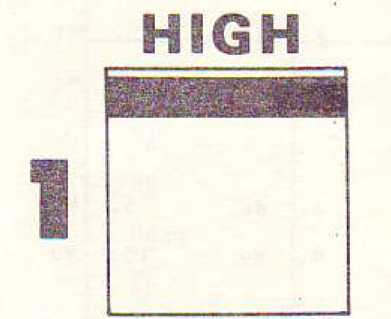
mS9 Tlmotherlf
A MODULAR APPROACH
PRONUNCIATION and ROMANIZATION
NUMBERS CLASSROOM EXPRESSIONS TIME and DATES
SPONSORED BY AGENCIES OF THE UNITED STATES AND CANADIAN GOVERNMENTS
This publication is to be used primarily in support of instructing military personnel as part of the Defense Language Program (resident and nonresident). Inquiries concerning the use of materials, including requests for copies, should be addressed to:
Defense Language Institute
Foreign Language Center
Nonresident Training Division
Presfdio of Monterey, CA 93944-5006
Topics in the areas of politics, international relations, mores, etc , whrch may be considered as controversial from some points of view, are sometimes included in the language instruction for DL1FLC students since military personnel may find themselves in positions where a clear understanding of conversatrons or written materials of this nature will be essential to their mission. The presence of controversial statements-whether real or apparent-in DLIFLC materials should not be construed as representing the opinions of the writers, the DLIFLC or the Department of Defense.
Actual brand names and businesses are sometimes cited in DLIFLC instructional materials to provide instruction in pronunciations and meanings. The selection of such proprietary terms and names is based solely on their value for instruction m the language. It does not constitute endorsement of any product or commercial enterprise, nor is it intended to invite a comparison with other brand names and businesses not mentioned.
In DLIFLC publicatīons, the words het himt and/or his denote both masculine and feminine genders. This statement does not apply to translations of foreign language texts.
The DLIFLC may not have full rights to the materials it produces. Purchase by the customer does net constitute authorization for reproduction, resale, or showing for profit. Generally, products distributed by the DLIFLC may be used in any not-for-profit setting without prior approval from the DUFLC
RESOURCE MODULES:
PRONUNCIATION and ROMANIZATION
NUMBERS CLASSROOM EXPRESSIONS TIME and DATES
AUGUST 1979
PREFACE
Standard Chinese: A ModuIar App roach originated f n an ln + e「》 agency conference~held at-the Foreign BērvIc© Institute in August 1973 to address the need' genera I Iy felt In the U.S. Government language training communi+y for Improving and updating C h i n & s a materials to reflect eurren十 usage In BěIJtng and In t a Ip a I,
The conference resolved i"o d&velop materials which were flexible enough In form and con十snt +o meet the requIremen+s of 3 wide rang© of government agenc1 os and academIc ipsti卞utfoňs •
A Project Board was est3btfsh0d consisting of represen+a-tlves of the Centrsl InteI Ifgence Agency Language Learning Center, the Defense Language Institute, the State Departmefi卞,s Foreign Service Institute, the Cryp十olog!c School of the Nat IonaI Secy-r 11 y Agency t and the II * S » Office of Edycat ī on , later j o f ned by the Ganadfan Forces Foreign Language Schools The represesrtatfves have i ūcIuded Arthur T* McNeI] If John Hopk f ns # and John 8oag t CI A}j Colonel John F• Elder HI_ Joseph C, Hutch Inson # Ivy Gibian, and Major Bernard M'y I I e r-Thym {D L I ) ; J s mes R. Fr f th and John B, Rat I Iff I!1 (FSI ); Kazuo Sh!tama (NSA); Rfchard T.
!hompson and J u H a Pet rov (OE)j and Lieutenant Colonel George Kozorlz (CFFLS).
Th© Project Board set up the Ch t ftese Cora Curriculum ProJ ©ct in 1974 In space provided at the Foreign Serv\c© Instf十ute. Each of the six U.S. and Canadl3r> government agencies provided funds and othsr assistance,
Gerard P, Kok was sppoīnted project coordtna个orf and a ■ planning council was formed consisting of Mr, Kok, Frances LI of 卞 he Defense Language Ins 十 itu 十e, Patricia 0 f C o rt n o r of the Unlver« slty of Texas$ Earl M, RIckerscn of the Language Learn f ng Center, and James Wrenn of Brown University. I: n th© fa l l of 1977,
Lyc1!Iē A. BaraIe was appointed deputy project coordinator*
Davfd W. Dellfnger of the Language Learning Center and Charles R* Sheehan of the Foreign Service 丨ns十I卞u肀© also served on the planning council and eoniribwted material to th© project. The pIanoIng council drew up the original overall design for th© materials and m©t regularly to rsvfew 肀hefr developmen+*
Writers for the first half of the materials were John H, T, Harvey, Lucille A. Barale, and Roberta S. Barry, who worked ;n close cooperation wIth th© planning council and with ths Ch}neso staff of +ha Fore f gn Service Ins+itu + e. Mr_ Harvey developed the instructional forma十s of the comprehension and production self-study ma十erjals, and also designed 十he communicatfon—based classroom ac肀fvT十fes and wrote the 十eacherfs gu ī des. Lucflle A- Barale and Roberta S * Barry wro十e the 十spe scripts and 十he
student text. By 197B Thomas E * Madden and Susan C, Po1d had joined the staff, Led by MsBara! e # thay have worked as a 十 earn to produce 十he materjals subsequent to Module 6.
A I 1 Chinese language mater!a I was prepa r6d or seIectad by Chu^n 0. Chao# YIng-chth Chen, Hslao-jung Chi # Eva Dlao, Jan Hu, Tsung-ml LI, and Yunhi/i C, Yang, ass i sted for part of the time by Ch E ©ih-f ang Ou Lee, YI ng-mī ng Chen p and Joseph Yu Hsu Wang *
Anna Affhoid©rP Met-II Chen, and Henry Khyo helped ī n the pr@p-aratlon of a preI I ml nary corpus of dialogues,
AdmIntstr电十fve assistance was prov ǐ dad at varIous times by Vincent Baselano, LI sē A. Bowden* Jill W* El Ms, Donna Fong,
Renee 1\ C. 11ang# Thomas E, Madden, Susan C * Pol a # and Kathleen Strype_
The production of 卞ape recordings was cl! ree十ed by Jos© M, Ramirez of the Foreign Service Insfl十u肀o Recording Studio, The Chinese script was voI cad by Ms. Chao ^ Ms . Chen, Mr* C h e n #
Ms, D1 ao, Ms, Hu:# Mr. Khuo, Mr. Li , and Ms. Yang. 丁 he English script was read by Ms* Barale, Ms* Barry, Mr* 8a sc f ano # Ms* Ellis Ms* PoI a * and Ms * Stryps *
The graphics were produced by John McClelland of 十he Fore 1gn Service Ins肀ī肀ut皂 Audio-Visual staff , under 十he general super-v i sIon of Joseph A « Sadote # Chief of Aud i o-V ǐ sua I *
Standard Ch I nas^ : A. Modular Approach was field-tested with the cooperation of~Brown Un I ver^ I tyj th~e"~De fens© Language Institute ,Fore Ign Language C任n十©rj the Fore t gn ServIqb Institufe? the Language L©arn ī ng Canter; the UnI tad States A f r Force Academy 十h® University of 9 ] I In o I sj and the UnIvefsIty of V IrgInIs #
Colon自I Samuel L * S + apl©ton and Co I one丨 Thomas G. Foster# Commandants of th© Defense Language Instftu+e, For©Ign Langyage Cen十©r, author!zed 十he DLIFLC support necessary for prepars十lōn of this edition of th© course materials. This support Included coordination, graph 1 c: arts, editing, typfng, proofread I ng , printing, and mater i a Is necessary to carry out these 十asks*
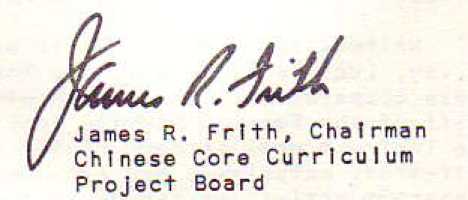
CONTENTS
PrefBce............................ r
PRONUNCIATION ANū ROMAN[ZATION
Tap© ! Workbook (Tones) *■■■•*_■•* ............3
Tape 2 Workbook (Consonants and Vowels I) _••••• ■ 5
Tape 3 Workbook (Consonants and Vowels II) ..... * 9
Tape 4 Workbook (Consonants and Vawels III) • ■ • ■ • ! 13
Taps 5 Workbook (Consonants and VoweIs IV) |g
Tape 6 Workbook (Tones I n Combfna+lon) ■■■•*■•• (9
Tone Card ................... ■ • _ ■ 22
Summary......* * ■ ........................23
Consonants and Vowe15 ................jq
I _ Finals ................. * 34
i I ■ I n i t J a I s ..............* ■ • 40
Sentence Intonation ............ • ‘ ■ , 44
Append!cas
I : List of Initials *....... • * • ■ • • • 49
II: 11 st of Finals........ ....... ■ 50
NUMBERS
IntroductI on .................. • * ■ 52
Tape I Workbook (Numbers 1-6) ....................53
Tape 2 Workbook《Nurnbers 7-10 and 0) # ■ * ■ , ■ ■ ■ , 55
Tape 3 Workbook (Numbers II一99) ■ • _ • ■ • * * ■ ■ • % 57
Tape 4 Workbook (Numbers i-99# Review) ••••:::: 59
Tape 5 Workbook (Numbers 100-999 3 * ■ • • *.....: gO
Tape 6 Workbook (Numbers !,000-99*999) _•■■•••: 63
CLASSROOM EXPRESS IONS................................7,5
TIME AND DATES
Tape i Workbook (Dates) .............. . • 78
Tape 2 Workbook (Years and Days of the Week} • * ■ [ : 79
Tape 3 Workbook (Clock Tim©} ■ • .......* ■ ■ : 81
Tape 4 Workbook CC i ock 11 me and Parts of the Day) # • : 64
Summary ...........
PRONUNCIATION and ROMANIZATION (P&R)
You 疒 ch f ef concern as you start 十 tils course ! s j earn \ ng to pronounce Chinese, The 6rten十3十I on Module, which plunges you r f ght Into trying to say thIngs ī n Chinese, na十uralty involves a certaTn amount of pronunciation work* This resou re© module f s designed 十o supplement that work wl+h a b r I © f # sys*
肀emstie Introduction 十o the sound system of Standard Chinese, as well as to Its written rep resen十a十I on f n P Tn y T n romaniza十īon•
The ess 舀 ritfa! part of 十 hJs mo d lt I € consists of the Pro nun* elation and Roman Ization fP&R) tapes and th© accompany i ng dIsplays and exercises In the workbook sect丨on of 十hfs modul©_ You should work through at !east the fIrst four of these tapes, and preferably 十he first six, while you are studying the Orientation Mody I © •
FoI low Ing the workbook sect i on of 十his module, you will find a summary of pronuncīat I on snd roman 1zat t on. You m f ght want to gIance at 十his before starting the tapes, particularly to locate certain charts and Iī sts which could be helpful for reference,
But ft would probably be better to put off studying 十he summary un+tl after you have finished 十he tapes # The tapes are Intended as an Tntroduc十Jon, while the summary is not. For one thing, text discussions of the sounds of 十he language cannot equal the recorded presen肀at ions and your teacherf s oral presentations*
For another thing, the summary provIdas consfderably more Infor-mat I on than you will need or want et first,
Bo+h the tapes snd the summary con + a t n d f scuss i ons of 十he sounds of the Isrsguage end t h e I r spellings* You may find 十 ha 十 thess discussions offer useful hīn十s, allowing you to put your* in 十 elleet to work on the problems of p ronunc 丨 i orr and romani 2at Jon . However, par十Iculariy in pronunciation, most of your !earn Ing must come from doing* It Is Important to p ractIc© , reading and writing the romsnIzatI on, but it is vttat 十o prac_
11ce recognizing and p roduc t ng the sounds of th© language*
Serious and sustained attempts to mimic, as fa!thfullyas pos-sib丨e* either your Ins十ruc+or or the speakers on the tapes will allow you to pick up unconsciously far more 卞han you can a十tend fo con sc Ious ly.
The most impor十ari十 thing for you to do Is to abandon the phonetic ĪTpre jud IcesIT you have bull十 up as a speaker of English and surrender yourself to the sounds of ChInesa * Being less s总t than adults 1n the i r ways, children are quicker to pick up a p roper accent P Try to regress to the phonetic: suggest f b II f ty of childhood, however hard it is to shed the safe and comfortable r! g I cf! ty and cer 十 afnty of adulthood. The most your intellect can supply is s certa ī n amount of guIdanc© and moni+orIng*
Be sure to repeaf the words and sentences on the tapes In your full norma I speaking vofce, or even louder, as If you were speaking to someone at a reasonable distance* When you speak to yourself under your breath, you are considerably less precise In your pronunc Fat Ion than when you speak aloud. ThI $ fs all rfghf In English, since you can a I ready pronounce the Idnggage. But, In Chinese, you would no十 be p广actfcfng that skill which you are trying to develop, and you wouId f I nd your-self at a loss when you 十rfed to swItch to full volume In class.
One of the advantages an adult has over a child I n learn-I ng ō language t s the ability to make use of 0 written represent* a 11o n of ft- In th f s course you I earn the PTny Tn sys十em of roman IzatI on a+ the same time 十ha十 you are lea rn ing the sound system of Standard Chinese, (The nonaIphabetIc system of wrftten characters 15 taught as a separate component of 十he course,) You will find that PTnyTn is not the simplest possfble phonetfc transcription. Some of the letters and combinations of letters chosen to represent the sounds of Ch I nese are not the most obvious ones, Wh fI© consonant letters generally s十and for fixed consonant sounds, voweI letters can stand for various voweI sounds, depending on what letters precede them and follow them. Some of the abbreviation rules are more trouble than they are worth at fIrst* These drawbacks--wh Ich are actually relatively mJnor compared with those of most spelling sys十ems--stem from th© fact that PTnyrn was designed for speakers of ChInese f no十 for speakers of Engl Ish. The primary cons I derat I on In devising th© system was the most efficient use of the fetters of the Roman alphabet to represen十十he sounds of Ch!nes©. The drawbacks to I earn f ng PTnyrn are cons IderabIy outweighed by the advantage 十hat PTnyfn is wide Iy taught and used as a supple-mentary script In t h e PeopIe1s Republic of China* You a re I earn Ing PTnyTn no十 merely as an a Id during the f i rst few weeks of the course, but also as one of the ways Ch f nese Js actually written, and as what mdy we I I represent the wave of the future.
NOTE: A number of surnames used in 十 hǐs modu I e are rare,
Some
may even be unfamiliar to most Chinese, a I though all are authent f c * These rare surnames are used to Illustrate various contrasts !n sound and spelling.
DISPLAY I: THE FOU« TONES
 |
|
mS9 Tlmotherlf |
 |
|
"horse" |
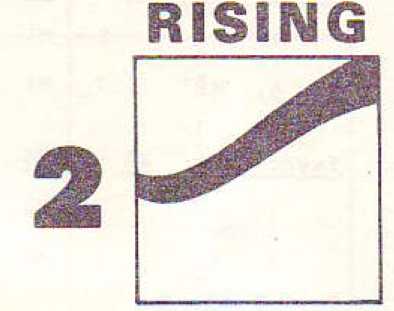 |
|
mi, ”hemp" |
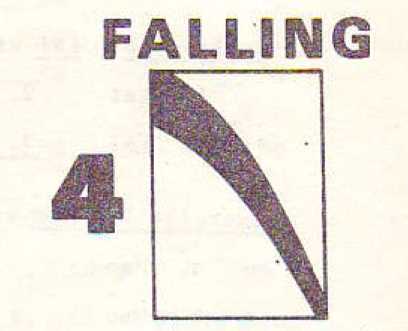 |
|
mh ,Tto scold” |
|
ExercIse I: Fgng vs. Fěng | ||||||||||||||||||||
|
|
ExercIse 2: W5Ī vs. Wei | ||||||||||||||||||||
|
|
Exercise 3ī M f vs, Ml | ||||||||||||||||||||
|
|
ExercJ sa 4: Wu vs. J^u | ||||||||||||||||||||
|
gxerc 1 SB 5: YTn vs . Yl n
|
I • |
Yin |
2. |
Yin |
3. |
Yin |
4. |
Yin |
5. |
Yin |
|
6. |
Yin |
7. |
Yin |
S.. |
Yli\ |
9, |
Yin |
10. |
Yin |
|
Exercl6: Li 1 vs. Lh1 | ||||||||||||||||||||
|
|
Exerci se 7; HSo vs_ Hao | ||||||||||||||||
|
|
Exercise 8: YT vs. Y± vs, H vs. Yl^ | ||||||||||||||||||||||||||||||||||||||||
|
|
DISPLAY h SINGLE VOWELS | ||||||||||||||||||
|
|
ExercI SB J | ||||||||||||||||||||||||
| ||||||||||||||||||||||||
|
Ēxerxiss 2 |
|
1 , |
Mě |
2r |
VT |
3. |
Fīi |
4. |
L6ng |
5, |
Hě' |
|
6. |
Mu |
7. |
Fīfng |
e. |
Ēn |
9. |
LC |
to. |
V6ng |
|
1 1 . |
M.Sng |
12. |
Ān |
13. |
Y)rt |
14. |
Mīng |
t5. |
H6ng |
|
Chinese Sorname |
SI ml Iar Sound In English Cwǐth PTnyTn) |
Orl©ntatI on ModuIe Examp 1e |
|
L|X |
Shanghai (Sh^nghSi) | |
|
Taipei (T S i b§ī) |
s h 4 1 | |
|
Hio |
Mao Ts©-1ung (Měo Zādōng) |
hSo |
|
I6u |
Chou En-lal (ZhOu Ēn1ā i) |
n6 izhffu |
|
Exarc[ss 3 | ||||||||||||||||||||||||||||||||||||||||
|
|
DISPLAY IK: |
SEMIVOWELS | ||
|
Consonant |
Semi vow©1 |
Consonant |
Orientation |
|
A 1 one |
A 丨 or\€ |
Plus Semivowel 1 |
Modu1e Examp Ie |
|
Hňng |
Wěng |
H^uing |
GuSngzhōu |
|
l^fin |
Wān |
Lu_ěn | |
|
Y£o |
HJ_ěo |
x1āoji© | |
|
Ling —... |
YinQ |
L 1 a ng i«« |
| ||||||||||||||||||||||||||||||||||||||||||||||||||
|
DISPLAY IV: IRREGULAR COMBINATIONS OF SEMIVOWEL AND VOWEL | ||||||||||||||||||||||||||||||||||||||||||||||||||
| ||||||||||||||||||
|
Exerc1se 5 |
|
1 . |
Yb |
2. |
YSn |
3, W6 |
4. |
Ub |
5. |
LfSn |
|
6、 |
Lub |
7. |
L! ěng |
8. l6r\g |
9. |
Nil |
(0, |
Hě ■ |
|
if. |
Huo |
12. |
Yěng |
13 * Sn |
)4# |
Yfe |
15, |
N 1 &n |
|
16, |
Mb |
17_ |
Ě |
I8_ Lub |
I9_ |
li in |
20. |
Exercise 6
|
1 * |
Fffng |
2, |
L£u |
3. |
Huang |
4. |
M£o |
5. |
YT |
|
6# |
W^l |
7, |
Ml āo |
8. |
Luh |
9* |
Lil |
!0, |
Wd |
|
!. |
H6ng |
I2_ |
L 1 Sng |
I3_ |
LuSn |
14. |
W5 |
15. |
Yin |
|
6. |
Yěng |
17, |
LI ěn |
IB, |
Lie |
19, |
Hě |
20* |
n |
PSR MODULE Exerc i se 7
|
1, |
F_ng |
2. |
M |
3. |
V |
4, |
% |
|
5- |
6. |
H |
7. |
% |
8. |
L | |
|
9 |
f |
# | |||||
|
9, |
n * |
10, |
_n3 |
1 I . |
L n % |
12, |
H ng # |
|
13. |
L_ng |
14, |
15. |
t |
16. |
L | |
|
% |
# |
r | |||||
|
17. |
H ng |
I3t |
L |
19. |
n |
20, |
L |
|
Exerc fse | ||||||||||||||||||||||||||||||
|
| ||||||||||||||||||||
|
Exercise 2 | ||||||||||||||||||||
|
1 . |
_Sn |
2. |
_Sn |
I. |
_加g |
4. |
—ōrtg |
|
5. |
e |
6. |
_5ng |
7. |
ē |
e* |
Sn |
|
9, |
_5n3 |
JO, |
ē |
i !. |
Sn |
12. |
ē |
■丁here are no appropriate examples fn the OrrentatIon Module. You will find theae words In Iatar modules.
|
Exerct se 3 | ||||||||||||||||||||||||
|
|
DISPLAY il: AFFRtCATĒS | ||||||||
| ||||||||
|
DISPLAY 111: iīl AND THE RETROFLEX POSITION | ||||||||||
|
|
DISPLAY IV: THE PALATAL POSITION | ||||||||
|
| ||||||||||||||||||||||||||||||||||||||||||||||||||||||||||||||||||||||||
|
Exorcise 5 | ||||||||||||||||||||||||||||||||||||||||||||||||||||||||||||||||||||||||
|
1 # ZhSng |
2, J1Sng |
3. Q;Sng |
4. ChSng |
5, |
JT |
|
6, QT |
7. Rǚ |
8* Zhfl |
9. Chd |
10, |
Zhho |
|
1. Qiěn |
12. Ren |
13. Chěn |
U. J fā |
(5, |
R6ng |
Exercise 6
|
R |
©十rof1 ex |
Pa 1ata1 |
Denta1 |
R眘trof10X |
Pa 1ata1 |
Denta1 | |
|
!. |
ZhSng |
J 1 Sng |
ZSng |
7, |
Zhāng |
J I Sng |
ZSng |
|
2, |
Zhāng |
J ĪSng |
Z5ng |
8. |
Zhāng |
J I āng |
ZSrjg |
|
3* |
ZhSng |
J I ^ng |
ZSfng |
9, |
ZhSng |
J 1 āng |
ZSng |
|
4fi |
ZhSng |
J \ ffng |
ZSng |
10. |
ZhSng |
J ling |
ZSng |
|
5, |
ZhSng |
J I āng |
Z3ng |
I ! • |
ZhSng |
J 1 Sng |
Zlfng |
|
6. |
ZhSng |
j I āng |
ZSng |
12. |
Zhāng |
J \ Sng |
Z3ng |
|
Exercise 7 | ||||||||||||||||||||||||||||||||||||||||
|
P&R MODULE Exorcise 8
|
!, |
■ 3fng |
2. |
_ |
3. ■ |
一1 Sng |
4, |
_I Sng |
|
5. |
āng |
6. ■ |
_Sng |
7. |
* y |
8, |
_ho |
|
9‘ |
ĪEn |
10, |
ěn |
1 1 * |
y |
12* |
Si |
|
13. |
ī |
14. |
ěn |
15, |
af |
16, |
___āo |
|
17, |
Tn |
18, |
t u |
19* |
5u |
20, |
T |
|
DISPLAY 3: AFFRICATES AND FRICATIVES | ||||||||||||||||
| ||||||||||||||||
|
Eyerclsg \: Shgng vs. X1Sng | ||||||||||||||||||||||||||||||
| ||||||||||||||||||||||||||||||
|
Exercise 2; ShSng vs. KISng vē. Sgng | ||||||||||||||||||||||||||||||
|
Retrof i ex Pa i ataI Denta! Retrof t ex Pa Iata\ DentaI | ||||||||||||||||||||||||||||||||||||||||
|
|
Exerc1t |
3 | ||||||||||
|
1 . |
Shlng |
2. |
X I Sng |
3. |
S5ng |
4. |
SO |
5, |
Sh5ī |
6. |
XTn |
|
7_ |
Sbho |
3. |
Xīāo |
9. |
S6ng |
10. |
Xii |
1 1 _ |
Su6 |
12* |
Shin |
PSR MODULE Exercise 4
|
I . |
Zhao |
z. |
X i ā o |
3. |
Cěo |
4, |
Shao |
5. |
Q i ěo |
6_ |
J i So |
|
7. |
ChěQ |
3. |
SuS |
9* |
Zuo |
10* |
Cal |
1 I » |
ShO |
12* |
XTn |
|
13. |
ZSng |
14, |
Chǚ |
I5_ |
JTn |
I6_ |
Song |
17, |
Zhōu |
1 a. |
Qīn |
|
DISPLAY II: FRICATIVES | |||
|
|
Exercise 5: XT vs. vs. ShT | ||||||||||||||||||||||||
|
DISPLAY 111
Rl běn __
Exerc!sa 6
|
1 , |
ShT |
2. |
ChT |
3, |
ZhT |
4. |
Rl* |
5 •‘ |
XT |
6. |
QT |
7. |
JT |
|
8. |
YT |
9, |
Lǐ |
10. |
ST |
1 1 . |
ZT |
12. |
Cf* |
13, |
or |
14, |
ChT |
|
15. |
ST |
16, |
Mf |
17* |
ZhT |
18* |
Zǐ |
19. |
JT |
20. |
Df |
21 . |
Rl^ |
|
22. |
Cf* |
23, |
XT |
24, |
ShT |
25. |
Mf |
|
1 • |
T |
2. |
T |
3. |
T |
4_ |
_^ng |
|
5. |
_1 5ng |
6, |
_Sng |
7. |
_Sng |
8, | |
|
9, |
一 1 ffrvg |
10. |
_i a rig |
1 1 „ |
__āng |
\2t |
■ _Sng |
•This Is no十 a name*
|
Ex6rclse 8 | ||||||||||||||||||||||||||||||
|
|
DISPLAY I | ||||||||||||
|
|
DISPLAY M | ||||
|
|
DISPLAY Ml | |||
|
|
Exerct se I | ||||||||||||||||||||||||||||||
|
Exercise 2
|
1 * |
n |
2. |
n |
3* |
9 … |
4. |
% |
|
5. |
6. |
% ! |
7. |
\ |
8. |
■v | |
|
9, |
a — |
10. |
1 1 . |
n |
12, |
% | |
|
15, |
i |
14. |
n |
15. |
!6. |
1 |
|
Lu |
•v Ltl |
Exercise 3
|
1, |
LT |
Lǚ |
.r. L u |
6. |
LTf |
Lu |
Hr L« |
|
2ft |
Lǐ |
Lu |
V LU |
7, |
LT |
LQ |
V LU |
|
3, |
Lǐ |
Lu |
V LU |
a. |
LT |
Lu |
Lt] |
|
4. |
LI |
Lǚ |
V LU |
9 • |
LT |
U |
LU |
|
5, |
LT |
lu |
LŪ |
10, |
LT |
Lū |
V LU |
|
ExercIse | ||||||||||||||||||
|
|
DISPLAY V | ||||
|
|
DISPLAY VI | ||||||||||||
|
Exerc丨se 5
|
J . |
Shīi |
2. |
Su |
3. |
xi |
4, |
Wǚ |
5. |
YU |
|
6. |
Zǔ |
7. |
Zhǚ |
8. |
JU |
9, |
Chū |
10. | |
|
M. |
Mli |
12, |
YU |
13. |
J'u |
14. |
-Q& |
15. |
x6 |
|
Exerc lse_6 | ||||||||||||||||||||||||||||||||
|
DISPLAY VII
hr
|
DISPLAY 1: THE NEUTRAL TONE | ||||||||||||||
| ||||||||||||||
|
ExercIse |
|
1 . |
Fēi \b |
2. |
Fě! |
I e |
3. |
F&J |
I e |
4. |
¥hl |
I 8 |
|
5. |
FSI ie |
6. |
Fir |
1 e |
7 • |
Fhī |
\& |
8, |
fēl |
1 e |
|
9. |
Fe I 1 e |
10. |
Fel |
I e |
1 !. |
F3I |
1 e |
12, |
Fěl |
1 e |
|
DISPLAY II: THE HALF THIRD TONE | ||||||||||||||||||
|

 |
|
战 īhSl |
Exercise 2
|
I, |
Tāi bēi |
2, |
BēiJTng |
3* |
Y5ngp fng |
4.. |
BSlhSl |
|
5. |
8iod1ng |
6, |
Bě1h a I |
7, |
B&ljTng |
8. |
Iě1 be I |
|
9, |
Bělhll |
I0_ |
Bāodln g |
I i, |
YSngpf ng |
12* |
Běihā! |
|
DISPLAY IV: TWO-TONE SEQUENCES (1) | ||||||||||||||||||||||||||||||
|
|
ExercIse 3 | ||||||||||||||||||||||||||||||||||||||||||||||||
| ||||||||||||||||||||||||||||||||||||||||||||||||
|
Exercise 4 | ||||||||||||||||||||||||||||||||||||||||||||||||
|
1 ■ |
ShSrixT |
2, |
X1ānggSng |
3. |
YānTSn |
4, |
Fěl le |
|
5* |
Sichuān |
ǒ. |
KHnmfng |
7. |
Gulngxln |
8. |
F&figyl |
|
9. |
Bilhif |
10. |
Fe! |
1 t . |
YSngpfng |
t2. |
ShīnghSI |
|
13, |
FSI \e |
14. |
yňnněn |
15. |
TāTbiT |
16, |
Lu6dln |
|
17, |
KSlhua |
13. |
¥b\ le |
19. |
01!jTng |
20, |
Rěhěr |
fThis fs the name of a former province.
|
1 |
2 |
3 |
4 |
0 | |
|
i |
Cāngzhōu |
Zhtfǚ |
QTngdāo |
B5yl |
FSI le |
|
2 |
Zězhōy |
| Jfěshf |
Su fyUSn# |
Měngz] |
Fěl le |
|
3 |
WuchSng |
J 1 ū 1 6n:g |
PuSr |
LBshtfn |
FSI \b |
|
4 |
Zhh]1Sng |
I Y 0 & n S n |
Rl ben |
WSmx I hn |
Ffe t 1 e |
|
Exerclsa 5 | ||||||||||||||||||||||||||||||||||||||||
| ||||||||||||||||||||||||||||||||||||||||
|
Exarc T se 6 |
|
1 ■ |
Cāngzhōu |
2* |
ZhěJIJng |
3, |
J1ǔ16ng |
4, |
Su īyCīSn |
|
5. |
Bōyl |
6, |
Wěnxtln |
7, |
FS【Is |
8, |
ZězbSu |
|
9* |
ZhTfǚ |
10. |
Yllenfin |
! 1 ■ |
PQěr |
!2# |
Mfingzl |
|
13. |
Fēl Ie |
14, |
Fel 1 e |
15* |
WuchSng |
16、 |
JI fishf |
|
17, |
QTngdao |
t8# |
Rl běn |
19. |
LOshun |
20, |
Fěf le |
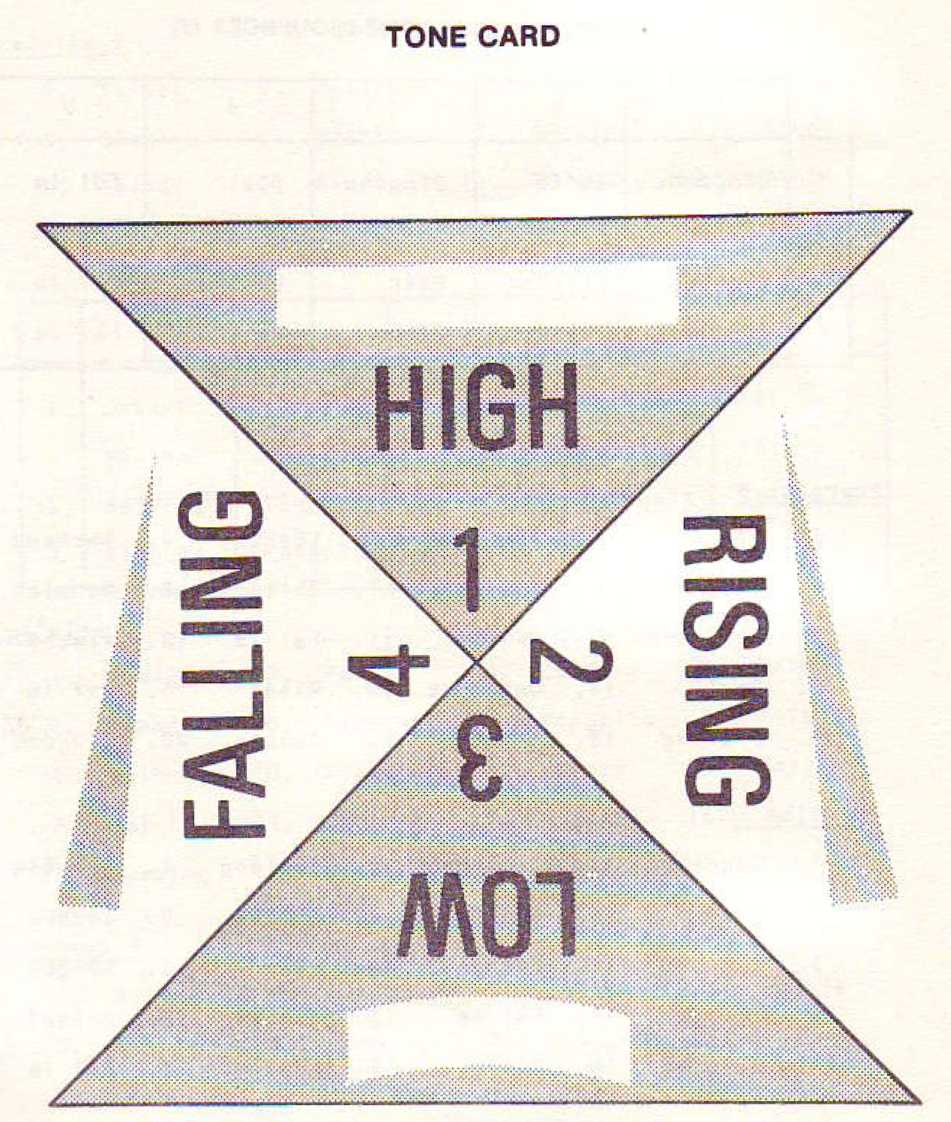
Every syllable I n Standard Chinese has ona of four d1s* tfnetive ITtonesM or patterns of pftch. The only except f on to this rule i s that a syllable loses 丨十s f nhereot ton® when f t is unstressed, The tone is just as much a part of a syllable as the consonants and vowels and performs fh0 same fwnctI on*-signaling the msanIng of the syllabi®* In other words, difference In ton© between 十wo syllables can signal o d(fference In mean J ngf just as a difference In consonants or vowels does.
It will be difficult at first to apprecia+s fully that a tone !s something 千ha十 belongs to a syt丨ab丨© rather then something that msre Iy happens 肀o it_ This Is because the only us© of pitch patterns f n English Is for I r» 个 on at Jon of entJr© sen-af feet S ng only the meanings of who 18 sentences. For ©xamp 1 the rising pitch af 十 he end of riSp ! nach Is del I c ! ous?!f has nothing to do with the meaning of th© word fldeI ieJoys11 but ■tells us that fhe who 16 sentence should be Interpreted as 11 Are you say I ng thaf spinach I s ds 1 tc I ous?,p I + may be difficult at first to remember the tons of a syllabi© as waI! as you remember the coivsonants and vowels. This Is because you have to develop 十he completely now habit of marking tones fn your msntaI dictionary.

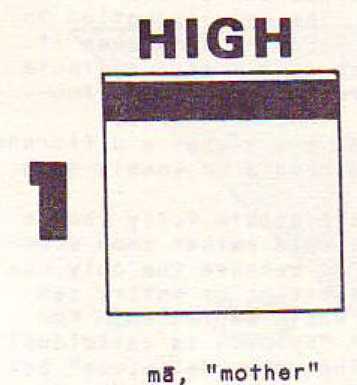
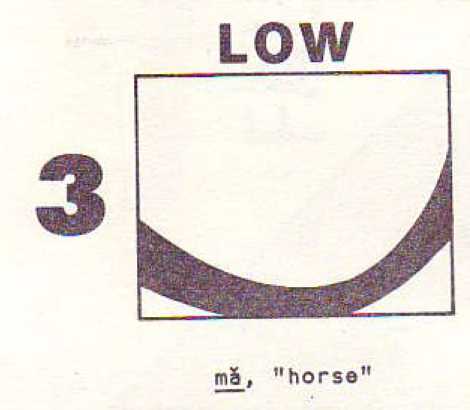
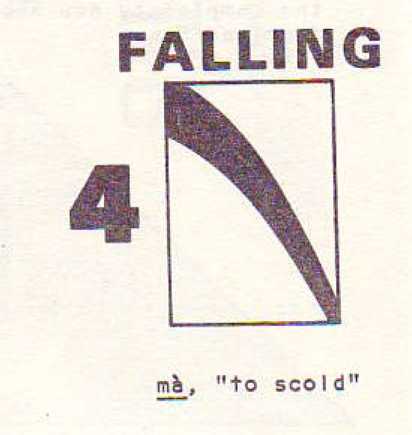
The Four Tones
Display I diagrams 十he p ī tch patterns of the four tones and gives the i r descriptlva names and traditional numbers* As exQmp les* four si ng 1 ©-sy I I ab 丨e words with eompls十©ly cHfferen十 mean Ings but different to the ear only In thefr tones are pronounced at +h© beg [ nn ing of the ffrst P&R tape_
丁he tone diagrams may bo read 3s musicsf notatIons• The vertfcal dimension stands for pl+chj wi th the 十op of 十h® diagram slightly above you r norma 1 pItch rang© f n Eng f f sh and th© bottom slightly below. The horizontal dimension stands for duration.
The th ǐ ckness of the curve stands for loudness» These diagrams show the tones as they are heard In isolated syllables.
Th© High tone (or First ton©> has s staady high p t tch and average length, You may f!nd It somewhat uncomfortable to pro — nounce a+ first* since a staady high pItch !s seldom used In Engl 1sh--yout on Iy relevant experisnee comes from my sic. Not Ica thst th# accent mark which rep resents this tons f n the roman Iza-tlon captures the level contour rather than the hfgh pitch*
Th© Rising 十one (or Second tone) rises from 十h© middle of 卞he pitch rang© to the top. It too has average length, Unlike the rising Intonatfon used In English for questions, +h© Rfslng tone gets Ioyder as 丨十 rlsesc Notice that th© tone mark In the roman Izat ion rises from left 十o rights
The Low tone (or Third 十one} starts low, dfps to the bottom of the pitch range, and then rises. The lowest part of this 十one Is th© most dfs+lnet丨ve, th© par十 fo focus on both when you are trying to pronounce the tone and when you are trying to r^ecignlze lt_ The lowest par十 takes 十he greatest ēffort and Is the most. promlnent# desp i te the fact that 11 Is actually no个 quite as loud as the rest of the tone, This part Is exaggeratedf both In length and In pt十eh, when the syllable ts stressed for emphasis- Particularly wl + h male speakers, It may have a harsh f scrap 1ng qua I f ty* The Low tone has greater than average length. In Eng I I sh a similar I ntonat f on i s sometimes used for ,fWe I I ?TI when you have been waiting to hear somefh J ng. Notice that the tone mark captures th© dipping pitch pattern -
The Falling tone tor Fourth 十on®) starts 3肀十he top of 肀he pitch range and drops sharply to the bottom, diminishing In loudness as it drops* It has shorter than average length* In English the falling intona1"ion used for exc I amat (ons ^ as I n ,rWe I I !fl is similar, but the Falling tone starts h t gher and ends lower than a I i but our most emphatic excIama十fons* Not i ce tha十 the tone mark falls from I eft to right.
The Neutral Tone
A syllable loses Its inheren十 tone when it Is unstressed.
An unstressed syllable, besides being weak and hurried# will have a pitch 十hat ts not something of its own but rather some十hIng that Is Imposed on ft by the tones of 十he surrounding syllables, particularly by 十he tone of the preceding syllable. t n such esses we say that the syllable has tos十 Its full +onef that f+s tone has been neutralized, or 十hat it is in the Meutral tone, ★ (The Neutral 十one Is taken up at the beginning of P&R Tape 6.}

Dfsplsy II shows 十he pitch of 十he Neutral ton© after each Qf the four tones. The examp Ies are four verbs whIch differ only 1n their tonesf each followed by a gram卬atteal element tn the Neutral tone. (Not Ice 十hat the Neutral 十one ts indicated 1n the romanlza十Ion by the absence of a 十one mark.)
After the Failing tone (4),十he pitch of th© Neutral tone amounts 十o th眘 end of the fall3 After 十he o十hōr three tones, t + amounts to a Jump back to, or slightly beyond,十he middle of the pitch range> In the case of the Low tone (3), the jump Is from the low point* si nce tho Low 十one has lost l + s rising taI I . The pitch of 十h© Neutral 十one may a 1 so be affected by 十h© tone of a syllable whIch follows* moving 十he Meutral 个one in the direction of 十he start of the following 十one- However^ a sequence of Neutral tones wfll stay at the same pitch or will drop gradually,
There are a few syllables, most of 十hem grammatical elements, which are always unstressed In norma 1 speech and、 there十ore, are a 1 ways In the Neutral tone. These syllables are ©xcep十Tons to the rule 十hat every syllable has a basic full tone^ a 十on总 that may be neutralized but will reappear under stress. To make a com-par I son w I th English, It Is hard to say what the nn©utra 1 vowa IIT In the word Tl g I v e nft has baen reduced f rom f si nc© the ending ,en is never stressed•
Tone Changes
The Low tone pronounced ī n I so I at ion has a d f ppIng-r!s f ng pItch pattern. This i s the shape It a I ways has before a pause. But the Low ton© loses Its rising tall before s NautraI fon^t and Dfsplay 111 shows 十hat the Low tone also loses fts 十aH before any non-Low tone* This display further shows 十hat some" thIng even mor^ unexpected happens to a Low tone before another Low tone* It changes to a Rising 十one, or at I east to something so close to a Rls f ng tone that even native speakers cannot tell the dIfferenc©. A Low tan裔 which hes lost its rising teJl before a different tone Is still recogrdzab丨e, or Is even more recog-nizabJe, as a Low ton©* But 苕 Low tone which hss changed to a Rising 十 ene before another Low tone is no longer reeogrti zab 丨每-Wh 费 t you will hear for fl I 1 m f I n eTl Is W6 hSo, Th© on ly way you can, te il that the f \ rst word 丨 5 re a I 1 y w6~Ts by hear I ng 11 when If Is not followed by a Low ton®, AnotFSV qu f rk of th© Low ton© Is that It sometimes chsnges to a R!s f ng tone before a neutral-i zed Low tone. Whether this happens or not depends on considers-t i ons of grammar and word formation * 1+ always happens f for example, when 十he syllables are separate words, as w f th the words qT ng j nto ask,ft and nT t f,you f Tl In the express I on Qf ng rt I . ,. f wh 1 ch maans IT (I ) ask~ou (to do such-and-such)lf or ,#PI ease ińo such-and-such 5 .T* it does nof happen t n j 1S j ? e (from J 1S J IS) # "older s 1 sfer *Tl (The exceptional behavior of th© Low tone I s taken up t n the sixth tap© of this module, right after th© sec-tlon on the Neutral tone.)
DISPLAY III: THIRD TONE BEFORE FULL TONES

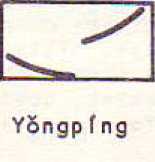
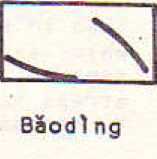
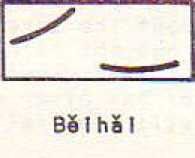
There are certsIn other tone changes that take place in longer sequences of syllables* Th© main example of fh 15 is that a Rising ton© changes to a High tone when It follows a HIgh ton© or Rising ton© and ts followed by any full tone. For Instanca # JIInS da, "Canada," I 5 pronounced JIīnādě■ Using tone marks, the rule—may be expressed like thfsi
|
* # ■ becomes --- |
* * ~ becomes ^ , |
|
• # " becomes * * • |
* • • becomes '-' |
|
■ " v becomes -一 |
# # " becomes r • w |
|
_ " % becomes--- |
• * ' becomes ' *"' |
However p th®se tone changes will stud J ēd only after vou have ga t nad control of two一syllable sequences^
There are atso casas whar© particular words change 十hefr tones under +h8 !nfIuenee of following tones. Th© number I Is yT when It f s pronounced a I on© or as one of a series of d!gTts, It Is before a Fa I II ng tone or neutro t t zed Falling tone, and betore any other tone. The numbers 7• ^7$ and 01 b5# are gt and b& before a Falling 十one for most speīFārs, Th^ rv^gat I v© marker bu Is before 9 Fallfng tone or neut ra I I zed Falling tone. IĪT™thIs course you will f t nd bǚ quit© a few times before yoy find but ke@p I n mind that faīi^Ts 十 he more basJc form, ITNōf fl for 一SVampU, Is bu *
Ton& Weaken t ng end S肀rertgthen I ng
In addition +0 the drama肀fc tone changes discussed prevt-ously* 十 here are certa I n minor autōinet t c changes wh I ch affect all full to!ri6S In 抖ords of two or more syllables* These Involve b1 I three factors shown In th© tone d f agram-"1oudness# pitch* end: length.
Le十*s start with a similar phenomenon In English* In an English word of two or more syllables, the syllables vary I n how forceful they are and how much emphas S s 十hey receive- We normally think of these levels of "stress" 1n terms of 十he loudness of the syllable, but other factors, Including syllable length and pitch,, are even mor© important* The one thfng you need 十o know about the s十广ess pst+e广n of an English word is which syllable has the ma I n stress.. This syllable will have the same weight as a 5ǐng]e-syI丨abIe word pronounced alone. Ths stress levels of 十he other syllables, down to 十he 1 eve I ws call ^unst ressed ,,f will then fall Into place ālmdsl* autōma 十[ca I I y _
Es<amp ! Bs such as lfPHO*to-graph #TI *1pho-TOG-「a-phy, ” and ITpho* +0-GRĀPH-i cM 十©l| you a I I you need to know about tho stress patterns of these words.
The best way to approach the stress pat+erris of Chines© words Is the other way around. The first thing to find out Is whether any of the syll3bl6s a re unstressed # 十hat ls# whether any 迅r© !n 十he Neutral tone, (By far the most likely candtda十e is the I as+ syllable*) Than the stress levels of the remaining, f」I I-ton© syllables will fa I! fntō pi see according to th© fol-lowing rules:
1, The ffrst ful I—tone sy liable will have norma I stress p the sam© ss when I十 Is pronounced.
2. The las十 full-ton© syliable (If there ts more than on© 5 will hav© heav f eir-than_narma I stress. Its loudness , pf 十ch range, and length will be exaggerated.
3* Any fnlddle syllables wJII have I I gh+er—than_norma I stress. Their loudness* pitch range, and length will be reduced
Letf s take, ss an example, tha Chinese phonetic equivalent of *T Italy,” Y1 dā I ī , A I I three syllables have fult Fa I I I ng tones j byt not i c© i n th© dIagrgm below that the three pitch pa肀terns are slightly dIff©rent: the first one is normal; +ha middle one \ s reduced? and the last one I s exaggerated
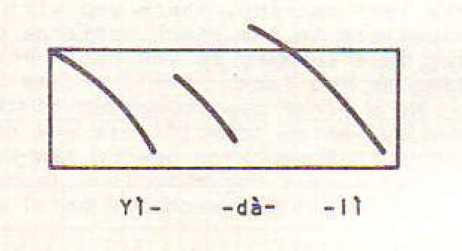
The few exceptions to these rules for relative levels of stress are due to meaning* One such exception !s 十ha+ the first of two fulI—tone syllables may be given 十he heavIer-than-normaI stress I f the first sy I I ab I e Is more s i gn t f 1 cant. For ®xam;p I © $ th© word for "Germany*, ! s pronounced by most speakers as DĀgy6, The syllable De- Identifies the country (It Is derfved phonetI-ca ! I y from Deu tsch 3 and ) g while - gu6? "country ,lf Is used f n the names of many countries. Thus the first RI s i ng-totie syllable Is stronger, in v !o I at f on of the general rules for stress
ns 十十 RrniĒī«
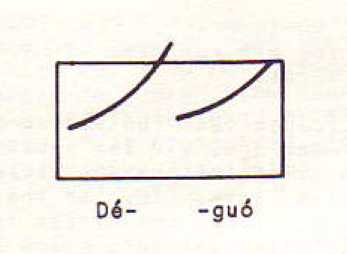
The 5ubord t status of -gu6 In the names of cou nt r I es Is mo 5 十
clearly seen by 十 he fac十 fhat some speakers 十 rest It 卷 I most a,s a suffix, pronouncing It In the Nautra丨 tern®, so that "Gormany" becomes DēgLio,
As with English levels of stress,十h痧se d f fferences are fairly subtle- You may no十 be able to hear them +00 clearly, and you can make yourself understood wē!I enough ev©n wl十hou十 getting them quIte rIght § a I though yoy are I Ik©1y 卞o sound like a computer* Yoy should be ab 10 +0 learn stress ps 卞 terrts wf+hou 十 even thinking about if you wT!l try +0 mtmlc speakers
ss cIosa I y @s possible.
After learning mor© abou十 consonan+s and vowels in the next sec 十 Ion of this summary, you will be l*itrodueed 十 o sent©ncs 1 n-tonot\on In the 【sst section* where you will find 十hs千 ther© are further mod f fI cat Ions In the pItch patterns of 十he 十ones» If yog ar@ reading 卞his summary as you begin 十he ccurss, new Infor-mat 100 Is piling up too fast, Dor^t try +0 keep everything I n pnlnd at once. As a first approximation of th© 十ones, for example! try giving your syllables ibentlfJable and correct tones. When you have mastered that* work on one or two more points. Mean-white, your ear will have begun 十 o lock I n; on whs 十 Chinese sounds Ifke, and yoy wit! begin to reach the point of automat f c control.
Much of th© structural sfmpllcf+y of the Chfnese language is made evident by traditional analysis of syllable structur®*
S十sr十 with the syllables wh 1 ch sre different to 十h眘 ear* There are only about 1,300 such dlsthngulshabl© sy I 1 a b I es f not nearly as many as !n English, (Many syllables which sound a tIka carry mors 十 fian one mean! ng and are written wl 十 h different characters for each meaning, much as the same English spoken syllable carries the thr©e meanings repre5snted by 十he spellings "个wo,^ "too ■丨T and ,Tto .pt)
cāe e.
一 ere -r I y -rry ert/>
next 1 n丨 > ar® f
if or-In
:amp I e Ihen
I?
ound 叻
ItroI •
Ue hou-f ookorol
mowt
3 O
■< (A

DISPLAY IV: INITIAL-FINAL COMBINATIONS
P5 āD仁LE
|
-婷•丨n<! mcHMlI |
• u • |
• i • | ||||||||||||||||||||||||||||||||||
|
<i |
•ī |
er |
Ml |
MO |
^in |
<?n |
JiHK |
enn |
*>nu |
u |
UN |
uo |
u«i |
uei |
ti«n |
uen |
赚w |
ueii^ |
i |
144 |
mi |
ie |
iou |
i»n |
in |
“ini: |
me |
u |
iir |
iian |
iin | |||||
|
m |
mHi |
mei |
mou |
mnn |
men |
ni4nc |
m«nR |
mu |
nm |
mi |
mūio |
mie |
miu |
mi«n |
n、ǐn |
ininK | ||||||||||||||||||||
|
U |
l»;i |
l»dl |
hri |
b«n |
ben |
h*nK |
beni* |
hu |
Ik* |
bi |
hi»o |
bte |
bi«n |
bin |
luni; | |||||||||||||||||||||
|
P |
•Ml |
pei |
fHHI |
pun |
pen |
|Mnc |
P«nii |
J>U |
fW* |
Pi |
pi«o |
pie |
puii |
pin |
(•ini* | |||||||||||||||||||||
|
r |
rcī |
r<Mi |
Ti«n |
fen |
r«iiR |
feni! |
fu |
fu | ||||||||||||||||||||||||||||
|
n |
ii.i |
u*. |
n4i |
net |
nao |
n«>u |
null |
nen |
nanp |
nenR |
n«»ni* |
111! |
nu» |
nuan |
m |
nia<> |
nie, |
niu |
num |
nm |
jilting |
"•ni! |
nu |
ntir | ||||||||||||
|
d |
ilii |
(!r |
d«i |
dei |
dati |
dou |
dMn |
dan妃 |
dems |
(lu |
duu |
dui |
duan |
dun |
di |
dǓMJ |
die |
diu |
dian |
,liHK | ||||||||||||||||
|
1 |
lit |
lc |
Ul |
i<tu |
Inn |
«*n« |
ten* |
1嗔 |
111 |
IUI» |
tui |
luan |
tun |
ii |
(ia«i |
tie |
lian |
line | ||||||||||||||||||
|
1 |
l‘t |
k- |
Ini |
lci |
IttO |
iiiu |
Ian |
lane |
luni: |
lu |
lllft |
luan |
lun |
ti |
lia |
liao |
lie |
liu |
lian |
lin |
“anu |
"nK |
lii |
liii. | ||||||||||||
|
K |
以’ |
Kei |
R-o |
R«u |
R«*n |
iten |
lf«ng |
Ren* |
*ong |
*!U |
Run |
gun |
Kusi |
Kui |
eu«n |
gun |
Ruang | |||||||||||||||||||
|
k |
kpi |
ki. |
k«i |
kei |
ka» |
ktw |
k«n |
ken |
kune |
kenn |
itong |
ku |
kua |
ku(» |
kuai |
kui |
kuan |
kun |
kuanK | |||||||||||||||||
|
h |
hji |
he |
hai |
hei |
Hmo |
hou |
h*n |
hen |
hang |
henK |
hong |
Ku |
hun |
huo |
hiui |
hui |
huan |
hun |
huang | |||||||||||||||||
|
t |
/.M |
/*• |
xi |
/.Mi |
Ml |
%«<> |
zou |
/an |
zen |
Mf»K |
z«nK |
zona |
zu |
zuo |
zui |
zuan |
zun | |||||||||||||||||||
|
t' |
VH |
rl* |
" |
t'MI |
c*ao |
rou |
tan |
ccn |
'••Hr |
ren^ |
conn |
ru |
t-uo |
cui |
ctian |
cun | ||||||||||||||||||||
|
s |
S(» |
si |
luii |
MMI |
MMl |
u«n |
ten |
uni: |
se«R |
song |
KU |
MIO |
sui |
suan |
sun | |||||||||||||||||||||
|
/.h |
ztlH |
/he |
ztiī |
/h“i |
zh«i |
7.ha<j |
/.hou |
zh«n |
zhvn |
zhanc |
zhenn |
zhon^ |
zhu |
zhua |
zhuo |
zbuai |
zhui |
zhuiin |
zhun |
zhuang | ||||||||||||||||
|
rh |
fha |
.Ii*- |
chi |
rl、.“ |
rh»<» |
(h<»u |
ctun |
ihen |
rhann |
t'hcng |
chon^ |
i hu |
chua |
diuo |
chaai |
rhui |
chuan |
chun |
chuanK | |||||||||||||||||
|
xli |
she |
shī |
shxi |
xhei |
ikh*ii |
Khmi |
shan |
lUieo |
>JianK |
shenK |
ithu |
«hua |
shuo |
chuai |
shui |
shuan |
shun |
&huans | ||||||||||||||||||
|
r |
rt* |
ri |
r<Mi |
rou |
r暴n |
ren |
ranK |
renn |
rou* |
ru |
rtM |
ruo |
rui |
ruan |
run | |||||||||||||||||||||
|
» |
ii |
j» |
Hao |
iiu |
jian |
i*n |
j»«l! | |||||||||||||||||||||||||||||
|
q |
qǐ |
qǐ. |
qiao |
qie |
qiu |
qian |
qtn. |
qianK |
qions |
qu |
que |
quiin |
qun | |||||||||||||||||||||||
|
X |
Kl |
KǏ« |
XǓK> |
Kie |
viu |
xian |
XǏR |
xian^ |
xin瓢 |
kionjj |
XU | |||||||||||||||||||||||||
|
fog |
wu |
w* |
wo |
vai |
wei |
wan |
wn |
wang |
we«f! |
yi |
y龜 |
yio |
ye |
you |
y«n |
yin |
v«nf |
yin* |
y<>"8 |
yu |
yu« |
yuan| yun | ||||||||||||||
|
Stops |
AffrKcal^ |
Fricatives |
Liquids |
- Nasals | |||
|
Unaspkated |
Aspirated |
Unaspirated |
Aspirated | ||||
|
Labials |
b |
P |
f |
vu | |||
|
Alveolars |
d |
t |
1 |
n | |||
|
Veiars |
g |
k |
h | ||||
|
Dentals |
z |
c |
s | ||||
|
Ret reflexes |
zh |
ch |
sh |
r | |||
|
Palatals |
i |
q |
K |
—— | |||
|
Vowels Alone |
Vowels PJus Consonants |
Diphthongs | |||||||||||
|
0-Row |
(s)-i (rH |
•a a |
-e e |
-an an |
-ang ang |
-en en |
•eng eng |
er |
-ong |
-ai ai |
-ao ao |
ei |
-ou Oil |
|
U-Row |
-u wu |
-ua wa |
-ug/*o wo |
-nan wan |
-uang wang |
■qji wen |
<weng) |
-uai wai |
* |
-U-i wei — | |||
|
丄’Row |
-i yi |
-ia ya i |
-»e ye |
-ian ygn |
iang yang |
•in yin |
•ing ying |
-iong yong |
(yai) |
-iao yao |
-i—u you | ||
|
U-Row |
-U yu |
-ue yiifi |
-iian yilan |
-iin yun | |||||||||
In this chart, vowel letters which do not have their “standard” sound values are underlined. The standard sound values are taken to be the ones they have standing atone as rinals after jq : n旦(as . in ^Okinawa*"), ne (as in '*cmemaTT)t n| (as in **BikmP), nu (as in “Ainu,” “canog”>t and nu (as in no"Ēngiish word). The letter a is not taken to have a standard sound value. Vowel letters which have been dropped in abbrevialions are indicated by underlined spaces.
Before ,i, (s) stands for all denial consonants and (r) for all retroflex consonants.
Hyphens mark spellings after'initials.
Finals with r suffixes are not shown.
PS.3PSODUr*E
Then* strip off the four tones. This leaves you with sboyt 400 d i ff©rant strings of consonant and vowel sounds* (See Display IV.)
Next, strip off any Inl+lsl consonants, or tnftials, of which there are 2t_ (See Display V and Append i x !, the I after providing an alphabetical tIof the Initials,》 What [s left are the f!naIs. There are less than 40 different fInals--a manageable number *
Last, class! f y tha finals by t h e f r media Is, that fs, f rt PTnyfn roman 1zatI on, by whether +h© final starts with 土(or w), with I Cor , with u (or 过),or with non© of the above.* Th 1s g tv© s 一you four c I a ssiTs which are useful when you talk about how tha fln&ls combine with the Inlt丨als* You also cross-c1 assffy the finals by what follows th© med i a i s. (See Dfsplay VI and Append Ix II, the latter p rovIdIng an alphabetical list of 十h© finals.)
A■ Plain F ī na 1 s
Let1s tak& a closer look at the structure of th© f t na t . Every f I n a I^ and hence every syllable, has a卞 least 迓 voweI, H©re are f i v© voweIs which can stand a I one as finals, efther with or without Initials:
|
ENGLISH EQUIVALENTS | ||
|
(T'horse'M |
as In 1'MaIT | |
|
dS |
C"vl rtLa,T) |
as f n lfAd£[ ī ne,f |
|
n]_ |
Cfyou'f > |
as Tn lfbi ki nP' |
|
bū |
(rno"> |
as 1 n "Budapest'1 |
|
rU^** |
("woman1,) |
no English equ f va ! ent |
* In th!s summary* under lining calls attention to letters (the letter u) and slant lines ca I I s +十©n十Ion 十d sounds (the sound /y/)- 一
**Standard PTnyTn romaniza 十 ion I s written on I y after and I . Everywhere els© (after £f x # and It f s wrltt©n ¥l mp 1: y y .
AI I of 十he English equivalents In th© examples are f of course # approxfmatS a个 best and wTII be fur十her off If your pro-nuncia+lon does not happen +o be 肀he most s十sndssrd American pro-nuncia十】on, Th© vowe1 /y/# for example, is rather d i fferant f rom {十s equivalent in "By dapest jir even for people who start 十he name the way 十hey start lfFootyf1 For someone who s卞ar+s ftBy_dap©stn the way he starts Tl beauty the compa rl son is way. off- The Chinese vowel is p ronoUnced with the tongue farther back ? n the mouth and vd 十h the lips more rounded,
There Is no English equiva丨en+ for /u/, whIch is pronQunced with the tongue in position for /I/ and 十he lips In position for /u/r sI muItsneousIy■ I肀 is oot 十he same as the first vowel In ,rUfah# ,p which Is pronounced w i th the lips I n position for /u/p but with the tongue gliding from th© position for /t/ to the position: for /'j / *
The vowe I s /I /, /u/、and /tl/ ar© wrI ttsn y 1 , wu# and vU when they do not follow an Int十fat. In most cas^s, you wITT no肀 be able to hear separate sound s correspond I ng to i and ¥^9 as you can hoar 1 n tho English words ITye,T and iTwoo•1f The three vow© 1 s are d ī s cussed again in 十 h© summary sections on finals, j_ finals, and f I rta I s.
There are two more vowel sounds which can stand alone as finals, on© of them only after initials* Confusingly, both sounds are represented by th© fetter £ (already seen as standing for the vowe I /1 / In TtTahIt|-”. The Tetter preceding the ' determines which vowel sound Is to be used,
After a consonant pronounced wlfh the tongue In the /s/ position (see page 42)f stands for a vowal pronouncad wlth ■ the tongue as close as pissible to the /s/ pos ī 11 on. Many Americans have a s ImI lar vowe I I n yjLj^st a momentoften ( nd I -ca+ed by th© spelling 11 j 1 st •,f For examp I a :
si ("four") approx I mate I y as 1 n Tl j j_stTI
A+ter a consonant pronounced wfth the tongue In 十ha /r/ posttfon, that Is, with th© 十cmguQ strcmgly curlad back (se® page 42)• i s + snds for a voweI whIch Is simply a prolonged /r/ sound, FoF example:
sh_[_ 十enTl) approximately as ī n tīwasherTi
When there Is no inttlal consonant sound before this vowel,
十he letter £ Is wri十十©n: r\, The £ 十6I Is you how to pronounce th© 1t it doss no个 stand for 3 separate sound. The who I © syilfble Is on© p roIonged /r/ sou nd .
Everywhere else, J_ stands for 十fie 11 standardlf /1/, as In "Tahiti
A f Tna I may a I so conslSt of a vowe f foltowed by a consonant, sǐther /n/5 or /ng/ (or /r/t but this has a rather different sta + ijsl . Here are examp les of all the ways +he vowe ts presented thus far can comb f ne with /n/ and /ng"
|
(,f peacet() |
as In MQntarioM | |
|
mang |
(ybusyir) |
/Q/ as In + /ng/ |
|
f 5n |
(M cent113 |
as In ,ff uin,lf f,chīcke£IT |
|
("cold” |
as in ”1 ung:IT | |
|
mf n |
(,Tp©op l e") |
as i n ”maan” |
|
mf ng |
「■bright” |
/ \ / as In TlamJJio" + /ng/ |
|
jffn |
(nm丨丨丨tary”) |
/U/ + /n/ |
The analysis of /tin/ as s I mp I y /U/ p!us /n/ will not a! ways hoid up. Especially when there Is no In ftla f > you may hear a weak vows I /o/ snaa k 1 n be f,ore the /n/, so that /U n/ almost rtiymea wfth /sn/.
There i s a j so a final written ong in which 十he o stands for a vowel very much I ī ke /u/. Actually, i + ī s closer to the vowst sound In "good1* than to the vowe I ī n "food. ”
I6ng tT'dragonTI) /o/ as In Tlwoman'1 + /ng/
There i s one flna! In whTch the vowet /e/ Is folīowad by a buUt-ln /「/, pronounced with a strong curl 1 ng back of the tongue , as t n +hs English lf Ka r. ”
ēr (''ear*') as In Trermine,f
Other syllables which end In /r/ have baen farmed by adding the sufffx For ©xamp I e :
nǎr_ 「where, ” as in flN*rc I ssus'F
In many cases, adding an /r/ suffix has s cons IdersbIe of feet on the finalj knocking out an /n/ or /ng/ and changing the voweI, for example, tYou wtfl deal with thesa Instances on a cōse-by-case basis in the course *) The /r/ suffix !s most popular In the Peking dialect but is on© feature of that dialect ths十 has not been widely accepted as a national norm.
|
» A f f n a I may a t so cons 1st of a drph + hongf that Isf a vowel followed by a weaker glide to 于he pos!tIon of /I/ or /u/. (SimMar diphthongs exfst !n English.) There sr© four such finals: | ||||||||||||
| ||||||||||||
|
These diphthongs are best I darned as unfts, If va look at the IfidlvJdusl letters, howeverp we notice that the letter" o has a different sound value I n ojj_ than In and ong_, and thaT" th© I ettsr £ has a different i*5\jnd vs I u©~n ej_ than i n ©, an j and eng • |
A final may a I sc consist of any of the above types (voweI a lone 9 vowe1 plus consonant, or d1phthong) preceded by a dI a I; thāt i sj by a weak vers 1 on of one of the vowels /u/$ /ī/1 snd /U/. The m©dI a Is /u/ and /!/ are like the Eng Ii sh semī voweIs written w and ^ I n ^wet11 and T,yet,! and written u and I I n "jagua「TI*Vnd "onfon■” Finals starting with theFe thre'e med ta I s are discussed In the next 中hre® summary sections.
B, y f f na I ē
Yoy have heard and sa^n the full vow©1 /u/ following an Initial In the word bǚ, _Tno.” When +h© vowe I does not follow •. an Initial, it is wrTTten wu■
wu (nf 1 v@flJ as In "ooze11 or ^woo11 r
As suggested by the English equ I va I erits, you may or may not hear a /w/ sound befor© the /u/*
A /w/ sound may ©Iso occur before other voxels at 肀h© beg Inning of s final. The sound 1s wrftten ^ when 11 follows an Initial ancf w when ft does not, (SI nc© tīTe sound I s a weak vers Ion of the 7owe I /u/f the sound wUI be ca I t ed medial /u/,) In 十he foI Iow ī ng ©xampI 6$ of fInaIs wh f ch start with the medial /u/, some have Initials and 十herefar@ use 十he u spelling. Some hōvs no Initials and therefor© use the ! spelling,
|
hub |
I "speech") |
as in >fqua 1 丨十y” |
|
w& |
{_f j ti) |
as In lfwal i11 |
Notice that the 1 after o In wo and uo_ ts used for yet 3n = ther vow© I sound, rough I y thi" vowiT t n the English word "saw^. 丁 h© spelling u£ I s abbrevIated to o after the initials written m# b, ān"d f_ tthe labial cons'onants, I nvo I v I ng the lips). The medTa I sound Ts s+! II there, however# so that m£, "Ink, T Is pronounced as !f it were spa I lad muo■
| |||||||||
|
You wou t d ©xp€C+ wen to be speHed yen after Initials# but I 十 Ss obbrev I ated to uru turn f 11 m. 1 >c up •” You can st t I I hear th© vowe I /©/ t however, TIT© sy [ lab I: e s w r I tten hun and. wfen rhyme. Not I ce: that the tone mark in turn has been shTTTed to"TFTe on 1 y remaining vowe1 letter. |
|
Hoě t w& I |
(name of a river) {"stomaeh") |
as In "Waikiki"why” as I n: "weigh" |
Again, you would exp@cf we 1 to b@ wrTften a ft® r ! n [十丨 a 丨 s
but tt Is abbrevl ated toTT: dul , ,p correct;^"" You can still hear the d I phthong /ef/# however. *TFa syllables written duj^ and we 1, rhyme_ (There Is some JustffI cat ton for this spell ing ■ 1n the High and R!sing tones, th! s final does sound quite like 十 he English pronoun lfwe#lf as the spei I Ing y * would suggest - ) Not ice that the tons mark i n du1 has baen shIf+ ed to tha ǐast available vowe1 letter.
0, 1 FI 03 Is
You have heard and seen 十he full vowel /iI following Initials in th© words ’.you”? ml n t n people"? and m ī n g , Mbr i ght ,TI I
Whon 卞he vowel doss not foilow an īnl 十Jal# it Is wrl十十en yi .
|
yt |
Cf,one") |
as In "ea_stpt or tTyeastM |
|
ytn; |
CircloudyM » |
as tn 1gV!n (YangM) |
|
llm |
(”w3n") |
/y/ + /ing/ as in "singM |
As ^suggested by the Eng I Ish equivalents# you may or may not h@ai a /y / sound before the /I/ ! n yl * You will i>su 3 I I y hea r a /y / sonnet before the / I / In y Tn 0 n d y f n g, and th© vowel I + s e t f Is mo「e I i ke the "short” EngTTsh vowFl I n lfsJjiir and lfsing. lf
A /y/ sound may also occur before oth台疒 vowe f s at 肀he bag I nnl ng of a final . T-ho sou nd 1 s written when I t follows an 丨?Jtlal and ^ when it 4obs not, CSInce tFe sound f s a weak version of the vowel /t/9 the sound will be called med ī a I /f/.) i,n 十 he f 01 I owl ng ©xamp !©s of f J na 1 s which start w f t h the med I a I /I/, some have initials and therefore use the 丨 spelling. Some havo no Initials and therefor© usa the speI(Tng.
|
("tooth ■’ 3 |
as in ifY^mahB,lf "yah 00 | |
|
vi |
("also") |
as I n ^ye I l ow*f |
As you have seen p In th© f I fia 1 s written ©f en, and eng f the letter © stands for a vow© I like tha e IF nch\ckBn.Tr^Wot tc© th 费个 i n +h© final wr f tten or Ie the 丨ettor e_ stands for n vowe I like 十 he ©_ fn lfhen«K i*Th I s~Ts the same vowe I sound stands for in th© d I phthong wr I tten In other words, an \ oF v I n the
ftna! means that e stands"Tor the vowe I of f,han. nT
| ||
|
tn th t s final written īan or yan^ tha 十er a has an sxcepfIona I sound value, ©ssant la I 1 y the vowa J In tha EngTlsh word f,hsn.TI |
|
y.āns |
{["Yin &] Yang") |
/y/ + /a/ as 1 n ?lMes1f + /ng/; |
|
as fn nYojnkerslf | ||
|
(^use11) |
/y/ + /o/ as 1 n nwomanlf + /ng/ | |
|
yěo |
(*pwantn) |
as in 11 yow I11 |
|
y&u |
(fIag&f n,T) |
as fn ^yeoman1* |
Ye卞 agaJn, you wou14 ěxpee十十he final you to be written !ou after Initials, but it ts abbreviated to ī y :\Tu, lfslx.n You caTT still hear the d I phthong /on/ p however. ITTy and yfeu rhyme * In th©
High and Rfslng tones thfs final does™sound quit® like tha * Englfsh pronoun nyou/t as suggested by the spa IIf ng Iu. Not Ic© fhat the ton© mark ī n Ifu has been sh i fted to +h© lasT available vowel letter. .
There ts a very rar© final ya I J not showrt (n D t sp I oy IV.
★Besides the historical reaso打 for 十hfs sp眘丨丨Jng# there Is 十he reason that adding the suffix /r/ lfbr f ngs back^ a norma I #
,rbroad,T /a/ vow© I *
Q, u Finals
The full vowel /U/ following an initial occurs |n the • s y I table nu , 11 woman.y When 11 does not fol low an initial, it Is written yu\
|
ň |
("rat n”) |
no Eng!丨 sh equiva1en十 |
|
yUn |
{11 rhyme") |
/u/ + In/ |
You may or may not haar some+hIng Ii ka a /y/ sound before the /tl/ # which Is pronounced with the tongue position of /i/ and th© lip position of /□/•
A weak vers f on of the vowe! /U/, which will be called medI a I /U/, may occur before other vowels at the beginning of a final. The sound; Is wrf tten EJ_ wher^ \ t follows sn initial and yO whan ft does not. One of the following examp Iēs of finals wh ich start with the med I a I /liV has an Initial? therefore the U spe Ming Is used. The other example has no initial, however? Theref or© the spelling I s usēń..
jtl6 (ITdef Inltel y'M /U/ + /©/ as in "hen"
Not t c© 十ha十 the letter a in this final stands for a vow©! sound t I ke the one tn th© English word ,fhan f 11 as e doas I n tha final spe i led or j_e and In 十 h© final spe I led e i , /U/ has the same ©ffee 十 zis /I/ bVcaus© the same tongue pos! t i on 1 s used to produce both +
yUin (^garden11) /U/ + /an/ as in the British
11 answer11
Instead of rhyming this final with the final written a£# some speakers rhyma yUěn with.十he final wrttten yan^ or ian, using th© vowfi I sound cf 十 he English Tl h a_n *lf
Each group of 【nl + īal consonants ǐ n the following summary sections (A through F) contains one consonant which Is distine-11 ve I y "asp 1 rated M and one wh i ch Is d i s+i ncf Ive ly ITy nasp 1 rated ,
The aspīrsi 十 ed consonsri 十 s exp 丨 ode with a s 十 rong puff of air. tn Eng t t sh p th© consonants wr I tten t, k_ tor c, as I n ^cow,11 or , and ch are I i ght l y aspirated at the beg 1 nn i ng of a word r as you can~Ta I ! i f you ho I d 十he back of your hand to you r mouth while say I ng ITps ,rl These same le 十十 ers* Including the eombǐna 十 Ion ch ; are used to roman I ze the d ī s十 ln.cf I ve I y , more strong I y aspirated Chinese consonants,
Unasps rated consonants explode without a puff of a Ir s The English līghtly aspirated consonants become unasp 1 rated after /s/1 as you can tell 1 f yoy say l?ps1< end uspa,p ags I nst the back of your hand. This Is an eu卡omaffc adjustmen十 for English speakers p and It wl I I tskē practice to learn to pronounce English sspira 十 ěd consorjarits as urs3sp I rated when there Is no /s/ to fplggar the adjustment."
English has s series of lfvo S csd(t consonants which sre p renounced with of the vocal eords* These Include consonants wrf tten 丄,Q Cas In both "GaryM and īfG@rry,f) # f (as fn "Jerry1”, and—玉_一 TĪtese same letters plus th© comb ī nation are Lisad to roman 1 ze 十ha ut\mq] cBd t d J st【net 丨 ve I y unsspl rated Ch I nese consoneints *
丁he consonan十s whIch are na f fher dIstI net f v©Iy sspI rated nor dJsttnetfveIy unasplrated are +h© ones wh ich can be pro-longad, such as /s/、 /I/# and /n/,
So far consonants have bean grouped In forms of the genera I manner tn whIch they are produced* Now they win be grouped in terms of th© tongue and l!p positions used 1n producing them,
A. Initials mt b ^ p, f { Lsb t a j)
These a re p ronouneed In th© positions suggested by th©
|
I ©十t®rs. | ||||||||||||
| ||||||||||||
|
These fnt卞fa丨s are never followed by th© medial /u/ or by th© vowel or mediel /tl/* Addl 11 odb I I y * hi is never fol lowed by the vowe f or medIdI /I/* (See Display t V.) |
B•. Initials n, d > t, { (Alveolar)
|
These are pronounced In the positions suggested bv th© Ietters, | ||||||||||||
|
/D/ and /t/ a re never followed by the vow© I or med 1 a i /Cf/. /N/ and /I/ ar© +he only Initials which may be followed ef十her by the vowel or med i a I /u/ or by the vowe I! or med ī a 1 /u/ . (See Display I V,)
C* In I十fats g, k, h (Velar)
These are pronounced t n. the pos 丨十丨 ons suggested by 十he Ietters,
| |||||||||
|
These Ifdtials a: re nev@ 广 followed by the vow© I s and medials /1 / and /u/* (See Display IV*) |
|
D * Initials zI cM s (Dental, or /s/ Pos ī tī on) These ar© pronounced as I nd1cated by the English equivalents. | |||||||||
|
To an English speaker, the spelling 1s only suggestive, and
the spelHng £ fs qu 1 +e arbitrary* Ul k© the velars (/g/, /k/ f
/h/) f f hes^ fīTltlals are never to I [ owed by th© vowe 1 s and med f a I s /!/ and /II/, (Display IV)
As mentioned previously, the t et+ar 丄 after these /s/-pos11Jon sounds stands for a vowel with the tongua as cIose as possible to the /s/ pos!t J on,
E, initials zh * ch t sh3 r (Retrof1ext or /r/ Pos111 on)
mJjTlMI _ 'W™—
These are pronoynced as fndīca’ecS by th© Engl t sh ©qu I va I en + s #
but wl 肀 h the tongue strongly curled back towards the post 个 ion f or /r/.
|
Zh 萏 ng IT- 1 ■ |
t surname) |
as fn 11 Jaw # rl but urivo ! ced |
|
Chāng |
{sufname) |
as I n ITchaw f 1i but more asp IrāTed |
|
Shing |
(su rnam©) |
as I n "Shaw" |
|
ring |
(fIat low” |
as !n tprswfl |
Like the velars i/g/t /k/t /h/) and dentals t/z/f /c/t /s/), these Initials are never followed by 十he vowels and mecHals /\/ and /0/B 《Display IV)
Some speakers pronounce /r/ with a certain 鸢mount of fri c-寸 fon so that it fs somewhat like the /s/ sound I n T,m©asy r©.,f Not I ce that th© unfamf I i-ar z h spe I I ī n g Is on f y suggestTve * Th® l e+fer after a cofisonsnt TFcU cates a prGnune I a十 Ion f n the /r/ pos丨 tIon *
|
As men十foned previously, the letter position sounds stands for a vo^aI which |
I after thsse /r/-Ts a pro Iong^d /r/ |
F- Initials 丄• q, ^ (Palatal, or /【/ Position)
Thesa are pronounced as indicated by the English equ1va-!ents, byt wīth the tongue pushed forward towards th© position for /!/_
|
£1 Sng |
(surname) |
as t n ,fj©ep jfl but unvoiced |
|
gjěfvg |
(surname) |
as I n ^cheesp 9 lf byf more asp EriTed |
|
XI Sng |
(surname) |
between the /sh/ of ,Tsheepfl and ths /s/ of "s^eep17" |
The pa lata Is are followed only by th© vowels end med U i s /I/ and /U/. (S&& Display 1V.} Pay particular attent1 on to the spellings £ and x# since 十hey are quite arbitrary to speakers of English.
With the p 3 I a t a!s j thfs survey of the consonants Is comp I ated■ Let1s summarize the relationship between groups of consonants and the different sound values of the Iet+ar I;
|
AFTER |
WHICH ARE PRONOUNCED WITH ĪWe YongUě |
/!/ IS PRONOUNCED wm the |
AS IN THE SURNAME |
|
/z/p /c/_ /s/ |
(n fhe /s/ pos丨 11 on |
c1osb to the /s/ posif 1 on |
ST |
|
/zh/$ /ch/, /sh/, r |
close to 十he /r/ position |
f n fh© /r/ posi f1 on |
ShT |
|
any other Initial, L |
In any o十h©r posIt Ion |
1 n the flstandard,p /1/ pos11 ī on |
XT |
in the previous discussion of different levels of syllable stress end their effect on th© pitch patterns of tones, you
were concerned only with words pronounced i n 丨solatfon, as If read from a list* Usually, of course „ words are strung together In utterances. Then, the rules of relat!ve stress apply over longer uninterrupted stretches which have a generally speeded-up tempo end narrowed t I owe red pi肀ch range.
In the following example, not!ce the shrinkage of the pitch ps+t© rns and +h® ovsraI 1 lowering* Tho su mam© and given name together hava the stress pattern of a single word--with normal stress on the fIrst syllable, lighter stress on the middle syllable, and heavier stress on th© last syllable*
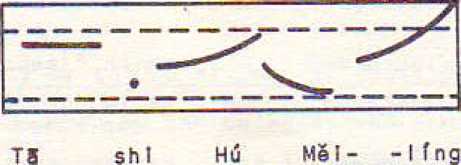
In add 11 i on to these automatic effects of stringing words togeth^fi delIberat© effects of sentence Intona+Ion sing Iē out for ai■十en+ion psrttculsr parts of a sen十©nce or IndI cate how a whole s&n十enee Is to be und&rstood,
Normally, a surname will carry more Information 十hen a fat lowing title and, thys, will be given greater ©mphasls by heevIer stress *
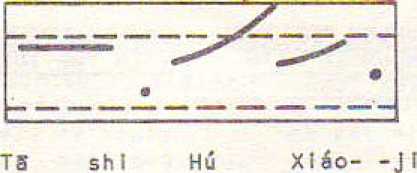
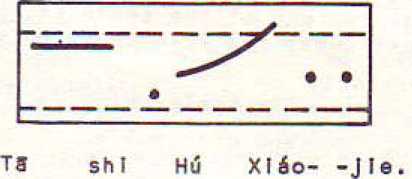

Har^j the stress oň + h© nega 十 fve marker bJ_ ^niphasīzes to someone that he fs wrong to thtnk that he hos īderT+f f lee Miss Kd,
y^e subordinate status of the title ts shewn by the 千bc十 th*t I+ is often pronounced wT十h no fulJ tone.
Mora genera My, tho key word or phrase in any sentence may be emphasized by heavy stress-
With the Qxceptīon of words that are emphasized, words \n rapid normel speech may seem to have lost the tones you are working ?o hard to 丨earn. But don11 fee I cheated. In the first placs, the words are seldom really monotone j th«rs Is probably som眘th『ng there to hear. (When you are do ī ng tha taIkf ng, r + I s t>st+ar +o rīsk being ovorly preclsd, since onfy the f f uent speaker has the eight to muňbfe,) !n the second place, these words ars go r ng to be emphas 1 zed somet I mes, and ttisn you can f + fudge.
The use of stress to single out for st + entJon .par十lcufar parts of sentences !s baslcai Iy the same In Ch Enose and englfsh. The on Iy major d T ffsrence to keep In mT nd Ts that 1n Chinese stress exaggerates the pitch pattern of a tone. Stress doss not give the sy M ab[9 a fa I 1 f ng pitch pattern, as In English. S© carsfu! not to 十urn your stressed Chinese syllables In + o Fal M no-十one sy I I 3b 丨 es »
There Is considerably more difference between Ch ī nese end Eng I I sh In 个he use of Intonation pa十terns to Indicate how whole sentences a re to be unders十oocL In English, intonation patterns are most noticeable a十十he ends of sentences. The typical pattern Is a drop at 十he end of the sentence, used for most sta十e-ments and for most questions with ques+lon words like ^wno" or "what." .
I r m Dan !ē i King.、
Who are you?%
The most common exception to th!s typical pattern In Eng I Ish \s a rise at 十he end of the sentence f used for most questions 十hat can be answered "yes’1 or,,no.n
Are you Mr* King?^
You1 re Mr. King?,
Who am J9 (meaning "You1re asking
who I am?1,)
1n the test 十wo examples, only ths rising Intonation shows thot these are IT6cho quest Ions11 calling for yes/no answers *
In Chinese, the typical Intonatfon ps+十ern--the pattern for most statements--1s the one we have a\ready presented: the sequence of tones, modified by stress, witfi s faster tempo and a narrower, lower pItch range than for words In Isolation.
You will have to fight your nature I tendency as a speaker of English to end statements with a drop tn pftch, A High tone remains s HI gh tone ? a Rising tone remafns a Rising 十 on© and a Low toneě with Its rising taī I, remains a Low tone^ ©ven a十十he end of a statement* Do not change them Into Falling tones.
Tho most common except 1 on to this typical Chtnese In十ona-11 on pattern Is a sllgh+ly raised sequence of tones# used for most questions. Unlike the English rlsfng Intonation, the Ch I nese ra1sed Intonation produces hIgher-+han-norma I pitch throughout the sentence and Is used for quest Ions with question words, as well as for yes/no ques十Ions*
In 十he fol丨owing two sentences, only the difference between ra I sed Intonation and norma I In十onatfon signals 千ha十 the first Is a yes/no question and the second a statement*
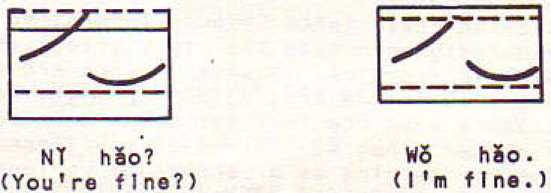
Now Iet1s compare th© Intonat\on of a qu^stfon—埘ord ques-11 on w}th f十s answers
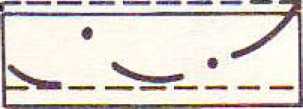
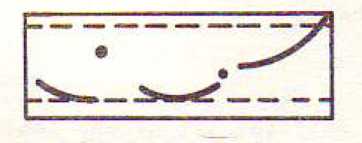
|
NT shI nSIguo rěn? (Whatf s your natI ona I 1ty?) |
W5 sh1 Mi Iguo rěn * CIfm an AmerI can.) |
Another ChInese \ntonatI on pattern lowers the pitch through* out the servtene钤* oft眘n giving th© voice a breathy qual〖ty rather I f ke a sigh. This pattern I s used for 11 echo questions ,IT wh t ch ar© usb4 to verffy what has been said, Letfs compare a norma I quest ion (raised Intonation) and an "echo quest 1 onTI < I owered Intonat1 on)£
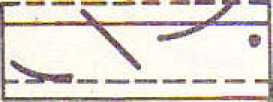

|
NT xīng Wing ma? Us your surname Wsng?) |
NT xlng Wing a? ([You say J your surname Is King?) |
I n d t scuss t ng these three Chinese I ntonat I on pa 十十 errvs, the po t nt has repeatedly been made 个hat 十h©y affect the general pitch level, of th© whole sēn 十 ence* However 3 there are nc 十 fcesble I n-tonatlonāl features st 十h© ends of sentences * These are parti-cu i a rIy no十tenable whan 十he last syllable Is In the Neutral 十one-In fact t the marker a has no r©eI m©&nIng or grammatical fu net I on of Its own, merely se"rv f ng as a carrier of various flnsi pītch eon十ours wh i ch affect mean ī ng. There are also cases where a final syllable with full 十one Is extended to carry one of these final p ī tch contours *
Together wl十h Interjections and the various pause markers which punctuate sentences t these In十onatIonaI dsvfees prov1 da much of the expressiveness of Chinese speech, Keep listening for 十hem.
PfnyTn
Roman I z旮11 ori
|
Nearest English Equivalent | ||||||||||||||||||||||||||||||||||||||||||||||
|
|
PTnyTn Roman 1zat1 on |
Nearest English Equ丨valent |
Spe Ming w 1 thout Initial |
|
a |
nMa,f | |
|
a 1 an |
”Shanghai," "high" nOntar lolf | |
|
ong |
"Mf + /ng/ | |
|
ao |
"Ma。 Tse-tung/M "mouth” | |
|
ar |
"Narc1ssus” | |
|
6 |
” Adgjine” | |
|
ef |
"Igl,” "sleigh” | |
|
en |
"fun/1 "chicken" ■■ ■« 胃 | |
|
eng |
"备 ungyt | |
|
er |
,ferml ne11 | |
|
1 (after s, z, £) |
If jJ^st,T (/s/ pos I + I on) | |
|
(after r, zh, ch, ShT — |
"washer” (/r/ posl+lon) |
rl |
|
(e1sewhere) |
^BlkinM* |
yt |
|
fa |
"Yamaha•" "yahoo," "yacht” |
ya |
|
1 an |
uyen" |
yen |
|
lang |
/y/ + uMau + /fig/, "Yonkers" |
yang |
|
1 ao |
•’yow 1" |
yao |
|
1 e |
"ye 11owM |
ye |
|
I n |
Mme£n,f |
y 1 n |
|
Ing |
"am上no" + /ng/ |
yf ng |
|
PTnyTn Roman丨 zat ion |
Nearest Eng 1 ī sh Equivalent |
Spe1 I 1ng ^1thout Inl+fal |
|
1 ong ly |
/y / + iT womanIT + /ng/ lfVflomanPT |
yong you |
|
D6 |
"W£l 1 T_ | |
|
ong |
T,womanfl + /ng/ | |
|
OU |
"sW’ | |
|
ti禽* |
"Budapest" |
wy |
|
us |
^qy^! ftylf |
wa |
|
ua 1 |
T,W5f k l kl f 11 ,fwhy,f |
wa I |
|
usn7 |
^quant i ty/T iTJ yanfl |
wsn |
|
uang |
"Wong/1 ,fq££l r+yfi + /ng/ |
wong |
|
u [ |
1Twetghlf |
wei |
|
un** |
^OweHj, 11 won" |
wen |
|
yo |
nw^I 1fl |
MO |
|
(no English equivalents pro-nouncad with the tongus In the /I / pos11 ton and the lips In the /u/ poslt【ont s!mu 1 -taneous1y•> |
yt? | |
|
□ in** |
/[I/ + ” 处十arlof_ |
yQan |
|
ūe** |
/U/ + t,h£n,t |
y Qq |
|
Un** |
/(!/ + /n/ |
ytfn |
Th© ability to use the C h f n s s 0 number system may be one of ths most usefui skills you will acquire during this course. The Numbers resoyrce module Intreduces the Chinese numbers from zero through 99,999 and ordinal numbers,
The essentfal part of this module consists of 十he Numbers (MUM)十apes and the accompany I ng displays and exercfses In the workbook sec十丨on of 十his modu丨e* The workbook 个迓其肀 Is followed by a summary sect ton.
You shou t d work through at !east the first four 卞apes, whIch Introduce the numbers up -to 丨00, whlls you are study-i ng 十he Orien + atlon Module, These tapes Include soma work on pronync I at Ion. Working w[th numbers offers an excellent opportunity to build up fluency and accuracy of pronuncIa-十I on wIthout having to I earn a lot of new vocabulary,
NUM 卞ap©s 5 and 6 are fntended to ba used with the sacon d ha t f of the Money Module, wh© re higher numbers a re usad in banking situations, However, because tapes for the resource rric d u 16 s are as self-contained as possitHa, you may use tham a十 any time with a mtnimum of reference +0 o十her eompōnents of the course.
|
DISPLAY | ||||||||||||
|
Exerci sa I
一 一 一 _ — ■■鋼■ — » —
13 2 4 4 13 2 2 14 3
■W-m — *=■
4 3 12 3 2 J 4
Exerc t se 2
A( 1243 S. 34Zi C. 1324 0. 4152 E. 2431
Exerc i se 5
A.__^一― 一 — 一一 C* - ----
12 5 6 3 5 4 6 1653
Ū * _____________
Exerc丨 se 4
Ai 53 j 5 b. 5362 C. 1645 0, 2564 E. 6135
|
DISPLAY | ||||||||||||||||||||||||
| ||||||||||||||||||||||||
Exercise I
A, 8, 0,
5 7 6 8 B 7 I 3 2 7 0 4
D. . E,
■k*
4 7 3 8 6 6 7 5
Exercise 2
8765 B. 7843 C, 7I57 D. 2867 E, 5S60
Exercise 5
A— B ■ 一 —
0 Ē •
U m —
— —*
Exercise 4
r I * iw W» ~~■
■«—
9 0 0 9 7980 9087
0 Ē.
\J 臟 _ __ m^- ■一
5 9 0 6 4039
Exerc ī se 5
A, 8790 B* 1939 C , 4096 D, 2005 E. 19BQ
Ex资rc 丨 se 6
A•一 一一一 — 一一 C_— 一 —《
17 7 6 丨 4 9 2 I D 6 6
D____ 一 E * _ ___
16 2 0 19 2 9
|
DISPLAY I | |||||
|
i i |
shfyt |
20 |
ěrsh ī |
22 |
fershlěr |
|
I2 |
s h ī e r |
30 |
sānshf |
33 |
sffnsh1sSn |
|
13 |
shf sSn |
40 |
si sh f |
44 |
sish! si |
|
14 |
sh f si |
50 |
wǔsh f |
55 |
wQsh1wQ |
|
15 |
sh f wu |
60 |
1 lǚshf |
66 |
1tǚshi110 |
|
16 |
shī\ā |
70 |
qtshf |
77 |
qfsh1qt |
|
17 |
sh f qT |
80 |
bāsh f |
B8 |
bfshlbv |
|
18 |
shībS |
90 |
jiEishī |
99 |
JlijshlJiǚ |
|
19 |
shfj lu | ||||
MUM MODULE ExercIbb 1
I. __2. __ 3. __4, __5.-
12 40 30 16 20
6. __7. __S. __9. --l0---
Exercise 2
u 85 2. 17 3. 4A 4, 93 5, 3B
6, 29 7. 70 8. 26 9. 52 \0, 61
Exerc!se f
I * 3 2.丨6 ■ 3, 4B 4. 70 5, 22
6 * 91 7. 34 8. 59 9, 6 I0, 30
Exerc ī 2
I - 67 2, |2 3. 90 4, 5片 5, 83
Exerc ī se 3
I• " + 5 2. 3+8 3,1+2 4.6+9
5- 7+2 6, 9+7 7. 5 + ( 6, 5 + $
Exercfsa 4
6 * 94 7. 25 8* 66 9. 52 10. 27
Exerciser 5
1 ■ 2! + IŪ 2. 65 + 10 3. 33 +- 10 4. IS +■ 10
5. 59 + 10 6. 7A + 10 1. 42 + 10 B. 06 + |Q
9. 25 + 10 !0. 76 + 10
|
DISPLAY I | |||
|
I 00 200 |
ylbif 1 1 SngbSī (1 1 angbS1) |
600 700 |
1 !yb3) qTbS I |
|
300 |
sānbl! |
800 |
bāhěī |
|
400 |
900 |
Jlǚbil ĒJIǚbin | |
|
500 |
wǚbā 1 (wubā1 ) | ||
|
DISPLAY II | |||
|
140 |
y 1 b S I s 1 s h f |
655 |
1 I yba1wush!wǚ |
|
222 |
1 t fingbi!ārsh1er C 1 丨 SngbS1ěrsh1©r) |
747 |
qTbllsīshlqT |
|
561 |
wubě \ 1 1ǚsh f yT (wubS丨 I 1ǚshfyT) |
999 |
JlSbi! jlūshljlLS (jlūbě!jlūshljiǚ) |
*RomanīzatI on in parentheses 1ndI cates 十one changes,
|
Ēxereise I (Answers ar© on tape.) | |||||||||||||||
|
|
ExercI 56 2 | ||||||||||||||||||
|
|
OtSPLAY lit | |||
|
COLUMN 1 |
COLUMN 2 | ||
|
104 |
ylbāI I fngsl |
140 |
ylbifsishf |
|
202 |
1 iāngbāī1f nger (1 iangbā!1 f nger) |
220 |
1 ISngbi1ftrsh ī C1l£ngbi1irsh f) |
|
405 |
sibS fl fngwǚ |
450 |
sibS1wǚsh f |
|
603 |
It uba1 1fngsln |
630 |
1i ubiIs^nsh f |
|
709 |
qTbai 丨 f ngj I u |
790 |
qtbāijtūshf |
|
DISPLAY IV | ||
|
i 10 |
y Ha l yTsti f |
4 t 4 si ba 1 y Tsh 1 si |
|
21: I |
1 1 angbāIyTsh1yt (1 I ingbS1yTshIyT) |
716 qTbSlyTshl1fy |
|
3 12 |
sSribi 1 yTsh i hr |
91 B J lubālytshlbS (jlǚbā f yTsh]bff> |
|
DISPLAY V | |
|
1 1 ! |
212 |
|
121 |
222 |
|
131 |
232 |
|
Exgrc丨se 5 | ||||||||||||||||||||||||
|
|
ExercIse 4 | ||||||||||||||||||||||||||||||||||||||||
|
Answers to Exerc ī ss 4; ], 9(9 2, 741 3. 230 4, 31
rr^2~ 6. 444 7, 208 8. 525 9, 808 10* MO
|
DISPLAY I | |||
|
I ,000 |
ylqIān |
6,000 |
1 luqtSn |
|
2,000 |
I Iangq1ān |
7#000 |
q T1 q i 慕 n |
|
3,000 |
sānC| I In |
8,000 |
bSqIān |
|
4,000 |
sīqiSn |
9,000 |
j!uq15n |
|
5,000 |
wǚq1ān | ||
|
DISPLAY 11 | |
|
1,246 |
y 1 q J ān 1 ǐ a ngb§ i s 1 5h I 丨 i īi |
|
3,575 |
sfnq I fnwīibě i qTsh 1 wy |
|
6,750 |
E i uq f ānqTba I wEish f |
|
Exercīse I | ||||||||||||||||||
|
|
Exercise 2 | ||||||||||||||||
|
|
DISPLAY \l\ | |||
|
COLUMN I |
COLUMN 2 | ||
|
I.0Ū1 ' |
a ī i丨 nqvT |
IJŪ' |
yl q 1 Snyl bā 1 i ī rmyT |
|
2,002 |
Iǐ ǎngq11T n gěr |
2,202 |
I \snaa\Sn1 iānqbā i 1 f nger |
|
6,005 |
M uq i ān1tnawu |
6,605 |
[i tia ī 5n 1 i uba i 1 fngwǔ |
|
7.Q07 |
qTqīīn1fnaqT |
7,707 |
qtq[SnqTbǎifīngqT |
|
9,009 |
J iuq 1 ān 1 f na.i 1 u |
9,909 |
11 ǔa i Sn.l 1 ūbā M f ngj 1 ū |
|
Exarc丨se 3 | ||||||||||||||||||||
| ||||||||||||||||||||
|
(Answers are on page 68,) |
|
Exerei se 4 | ||||||||||||||||||||||||
|
|
DISPLAY IV | ||||
|
I: 0,000 i |
y I wan |
i 4 |
0,000 |
Iiuwěn |
|
2; 0,000 |
I(ingwān |
7; |
0,000 |
q Twān |
|
i 0 ,000 1 |
sSnwin |
( 81 |
0 • 000 |
běwln |
|
4: 0,000 |
si wan |
9丨 |
Op 000 |
jIǔwan |
|
5: 0,000 |
wu WB n | |||
|
ExercIsa 5 | ||||||||||||||||||||
| ||||||||||||||||||||
|
(Answers are on page 68.) |
|
Exerci s扫 6 | ||||||||||||||||||||||||
|
|
DISPLAY V | |||
|
COLUMN 1 |
COLUMN 2 | ||
|
,0001 |
y ! wěn 1 I ncjy T |
I ,0001 |
y f W&ft 1 f ngyT |
|
#00i i |
Vfwan 1f nqyTsh1yT |
1 B IOQ t |
V fwāny1q15nIīngyT |
|
,01 1 1 |
yfwan丨 fngylbi(-ytshiyT |
If1101 |
y f wa ny1qISny t b ā I -!JnayI |
|
ExercIse 7 | ||||||||||||||||
| ||||||||||||||||
|
( Answers are on page 68.) |
|
ExercIĒfi 8 | ||||||||||||||||||||||||
|
|
DISPLAY VI | |||||
|
No, |
42 |
Da I T |
J |
lē |
Sish1Irhěo |
|
No* |
36 |
Da 1 T |
J |
lē |
SSnsh11 T uhho |
|
ExercIse 9 | |||||||||||||||||||||||||
|
|
ExercIse 3 | ||||||||||||||||||||
|
|
Exerc1se 5 | ||||||||||||||||||||
|
Exarc Ise 7
|
I- 20,00丨 |
6‘ |
84,206 |
|
2* 40,010 |
7 ■ |
60,009 |
|
3. 33,001 |
8, |
59,003 |
|
4. 70f601 |
9* |
10,050 |
|
5. 98,015 |
to. |
20f 505 |
The C h f ne se system o f numbers is s ī mp t e and predictable, You may ffnd 丨十 more regular th^r the number system !n Eng Jī Sh. Here are the numbers \ to fO ptirs zero :
| ||||||||||||||||||||||||
|
The numbers 丨丨 through 19 are formed wfth th^ word for iO* sh1j fo J I owed by the words for 丨 through 9: |
| ||||||||||||||||||
|
You can see that th© sy steni for forming i I through 19 resemb I es add Itlon: Iū + It etc. |
The number 20 \s f i ters S Iy "two tens." A I 1 the multiples of JO are formed wfth 十he words for 2 through 9 fotfowsd by 个he word for IQ, shf;
| ||||||||||||||||||
|
You can ses that 十hTs sys + am resemblas mu I十1pI icatfon: 2 x 10, e+c, 1 |
The remaining numbers up to. 100 are formed by combining these two systems. For example, to form tha word for 21, ffrst mu (tip ly, ,ftvfo tens," and then add the word fo「I.
| ||||||||||||||||||||||||||||||
|
No, ice that sh ī j 10, loses its tone In the ^xamp1^5 above, |
Multiples of 100 are formed I n the same way as mu 111 p I ©s of 10:十he words for 丨 thrpugh 9 followed by the word for flhundred ,fl -bā ī ■
|
yl ba i |
<100) |
si ba I |
(400) qtbāl |
(700) |
|
I tāngbā i (1 īanqbal) |
(200) |
wiibāi (wǔbi1) |
(500) bābāi |
(800) |
|
sSnbā1 |
(300) |
1 1 u b i ! |
(600) Jlūbaf C600) (jiǚbān |
(900) |
Notice that th白 word for I9 yTf occurs before -bS f j at十hough It was not used before I0f shf, Note also the dlfferent wo疒d for 2 used formtng the hundreds. In th© numbers 2P 12,
and a I I numbers con + a f n I ng 2 up to I00# ājr Is used * L lang*
Is used with hundreds.
When forming numbers wtth ^hundred,11 remember that some of the numbers from 丨 through 9 change ton© before the Low tone of -bSI• t (丨} changes from a Hfgh 十one to s Falling tone * Ll^ng (2), wu^ (5〕,and ul £9) change f rom Low torses to Rising ton白s•
|
yt |
y] bS i |
|
1 (ing- |
1 īIngbā 1 (11angbāi) |
|
wu |
wīiba ! (wǚbi J ) |
|
jiū |
jlūbāi fj fubli) |
|
The numbers 1 through 9 after the hundreds bring up a special point when there Is no number in 十he tens place; a zerot Iīng, ts used to mark 十hat place. | ||||||||||||||||||||||||
|
When numbers In 十he 十e©ns follow the hundreds, tI) Is fnserted before the word for 10, shī• To understand why this Is necessary ^ you neod to d ! st i ngy; I sh between the numbers I through 9 and the numbers which label a group of numbsrs-«more specifically, wh [ ch label a power of 10* such as 1?ten i11 sh; f f "hundred," -běI, and so on. The rule is that two numbers which are labels for other numbers (such as -b a ī and shf) cannot occur one after 十he other* Th^re + oro, I s added before shf In thē numbers I 10 through 119*
■h
|
y1bā1yTsh ī |
n io) |
bāIyTshtwy |
f 5 1 5 1 |
|
11āngbāt yTshIyT |
ai n |
bSbělyTshi丨 |
fBI6) |
|
sibi1yTshl«r |
(412) |
sānbāi y Tsh1qT |
(317) |
|
j i ybě iyTsh ǐsān |
f 9 ! 3 ) |
1lubāīyTshlbS |
(618) |
|
qTba iyTshIb) |
[7 14) |
y 1 b a 1 y T s h ! j ī ǚ |
(119) |
The High 十one of charges to 3 Falling tone before the Low tone of -ba < bu+ does not change before shf, as you would expect. TWē- tore of ^T. fs usus I f y affected by any ton© wh f ch follows, but this cbsb Is an excBptlon,
|
ylbělbSsh!jlū |
(189) |
1 t ybā 1 sishIqt |
(647) |
|
1 I Sngbs!arshI hr |
(222) |
qTbS īsānsh11lu |
(736) |
|
sānbā ! st sh i 1 i ti |
C346) |
bāfbiiqtshl J lu |
C879) |
|
sibS I bāshI |
(460) |
J lubil1lushīěr |
(962} |
|
wijbS } sffnsh I yT |
(53!) |
|
The word for ''thousand" is -q ī Sn. The thousands are formad f n the same way bs ths hundreds. | ||||||||||||||||||||
| ||||||||||||||||||||
|
Notice tlia十"I Is I fěng- and that the High tone of yt changes 十o a Falling tone before the H!gh tone of -qI. |
Ru[ss concerning tone changes and us© of ^ and \ fng for numbers 1n the hundreds also &ppSy +o numbers in 十he thousands.
|
yiqISn1fngbāshI 丨 15 |
f1,086) |
|
1 Iěngq i ān! S āngbaIěrsh t |
(2,220) |
|
wǚqIān1 i dba Iy Tsh f |
(5.610) |
|
b5q i Snylbā i 1f ngwS |
C8# 105) |
|
J t&q iā*nl fngyTsh IqT |
(9,017) |
The use of Iīng Is expanded in numbers as large as thousands. The word Ifng can stand for 十wo or more adjacent zeros. This use Is similar to the English "and” 丨n none thousand and oneTI ( I ,00 1 ) •
| ||||||||||||||||||||
|
Seemingly, this expansion of the meaning of Ifng couId lead to conluslon, but compare the following: |
|
ylq1ffnslbě11f ng 1 I u |
t1,406) |
|
y1qISn1丨 ngs)sh( 1 1 u |
C1,046) |
|
ylqIfn1TngI!u |
(1,006) |
|
ylq1Sn1 f ng i t ush 1 |
(1 ,060) |
The remaining numbers Jn the thousands are formed reguIsrIy■
|
j 1 ǔq ǐSn1 ISngbě f qTsh1bff |
(9, |
278) |
|
qTqiSnsSnbōlyTshlyT |
(7, |
311) |
|
s)qISnwǚbS ifersh1ěr |
(4f |
522) |
|
1 1 ingq I f nyl bǎ I 1 lCishlsffn |
(2,163) | |
|
The word for "ten thousand” Is -won• | |||
|
y I win |
(10,000) |
I 1ǚwěn |
(60,000) |
|
1 1 ěngwan |
(20,000) |
qf w^n |
(70,000〉 |
|
sSnwan |
(30,000) |
bAwan |
(80,000) |
|
st wěn |
(40,000) |
jIuwān |
(90,000) |
|
wuwěn |
(50,000) | ||
Not Ice th&t the numbers yT# qTt and b£ change from High 十ones to Rising tones before t ne FaT I I ng t"ōn0 of -wāin.
The ruIes for hundreds and thousands also apply to ten thousands: I) The word I \ Sng- (2) Is used with _wan,
2) Numbers whIch label a position cannot occur one right after another. 3) The word Ifng can stand for 十wo or more adjacent zeros in a number.
|
j fǚwānerqlSnsānbalslshi 1 |
(92,346) |
|
1 langwaněrqlSnerbalěrshler |
(22,222) |
|
běw%n1f ogb8 |
(80,008) |
|
bi^ān 1 fngbā'shibS |
t8Q,088i |
|
bĀwanI Ingbābě1bSshIbā |
(80f880} |
[n the first two examp I es er^ ! s used for 2 when i t f s no十 the ■first digit in a number*- TFe second example c 1: ©arty shows 十hat natfve speakers may start off with I IS n g- and thBn sw f tch 十。©「.
Numbers in 十h© ten thousands bring out ā character Isfīc of the Ch T nese number system whIch Is truly different from 十h© English system of numbers» Traditionally* Chfnese numbers were wrItten with the comma to the left of the fourth digit■
|
1 iSngwānwǚqlāfiwiiběisānshl 1 fīj |
2*5536 |
|
běwan 1 I īiq f Snqtbā I st sh 1 qT |
8,6747 |
L E ke 十he card Inal numbers, ordinal numbers 1n ChInese are also eās I I y and regularly formed * Th© word for ITnumbe r,n d 1 響 (in the sense of 11 number tlf} may be placed before any cardTīTa I number to make i t an ordinal rtumbsr,
|
dlyT |
C11 number "first”) |
|
dl er |
("number 2111 "second115 |
|
dl sSn |
tTInumber 3,” T,thlrdu) |
|
dl si |
(TI number 4,” tTf ourth,f) |
|
dl wu |
C11 number 5,” ITf 1 fthn » |
|
6}\\u |
(•,number 6 ,11 ,Ts f xthTI) |
|
dlěrsh f |
(,TfwentfethM) |
The prefix dl■ must be foI I owed by a unit number, not by a number wh i ch Ia label for a group of numbers - For Instance:
|
dlylbě I (NOT dībS" |
(ITCon®3 hundredth") |
|
dl ylq i fn (NOT dlqlān) |
("ConeD fhousandthM 5 |
|
dly f wan (NOT dtwan) |
("[one] +©n thousand十h”) |
|
Not i ce fha*t thts does NOT hold +ru© for the numbers 10 to 19: | ||||||
|
There Is a I so another word, -hāo, which when used nf th a number refers to thIngs in an order. Unllkft the numbers used with dl-, the numbers with -hāo com© to be usad as names for the things they refer to, as "TrT addresses or dates,
Oi IT J 9ē SUhlěrhāo ("No. 4Z Db\l Street")
SSnyue Sānshl ythio (''March 31 st'1)
There are two ways to soy numbers aloud, One way Is 十o q1ve the fuIi form of the number, ī nc f udIng the 1abeIs for the powers of JO.
|
80,01 丨 |
bawan1 *ngyTshlyl |
|
12,705 |
y fwěn1i angqISnqTbl1tf ngwǚ |
|
70,009 |
q f win Ifngjl u |
|
48,347 |
si winbffq1ffnsffnba1 sish1qT |
丁 fie other way Is to use n + s I ephone sty f e," leavfng out 十he Iabo!s for the powers of 10-
|
12,705 |
yT-ěr-qT-1īng-wu |
|
70,009 |
qT- I f ng- 1 f ng_ 1; f ng-J I u |
|
43•34 7 |
si-bā-sSn-sl-āT |
There are two th 1 ngs to not Ice whon re&d ing numbers ,Ttfilephonfl Style, Fl rst of alt, since there 1 s a s! 1 ght pause between each number, the tone of a syllable Is not changad by the next syllable, Therofora* ali numbers ore pronounced xJth the!r bosīc tooes. Secondly, 1 fng cannot stand for more then one taro (and ī£ repeated If be),
nTel0phon« sty丨e*1 Is used to tden+1 fv a ye»r. The
word for ,fyaar,,r ~n\ in, follows +he numbers.
yT-JIǔ-wu-Itng*rIon (1950)

|
I. |
Zāoī ^ |
Good mōrn丨ng. |
|
2, |
Women sh1ng ke ba * |
Let1 s begin c丨ass- |
|
3. |
Nl tTng wo shu5v |
Llsfen to me ssy It, |
|
4 • |
Nǐ dong 1@ ma? |
Do you understand now? |
|
5. |
W6 bu dēng. |
I don 11 understand * |
|
6. |
D5ng le* |
1 understand* |
|
7. |
Qīng gānzha 5 h> y S . |
P丨e&se r任pea十 after me. |
|
8. |
07 ng n1 zhī shuō y f cl• |
Please say tt agalru |
|
9, |
Dy1 10, |
That1s correct* |
|
IO* |
8u du1 , |
That1 s not right. |
|
I I . |
W5 bu zhldeo. |
1 donft know. |
|
12, |
Shi shinm@ y1s f? |
What does 丨十 mean? |
|
I 3. |
HaOp w6m©n ke ba. |
Okey, ctass fs over, |
|
! * 2. |
Wo mel tTngqTngchu * Wo- you y 1 ge wfentf. |
I d 1 dn11 hear clearly. I have a question. | |
|
3, |
Nl shuōcuo 1 a « |
You said It wrong* | |
|
4. |
Nlde fāyTn bǚ těT hio. |
Your pronunciation isnT+ foe good. |
t |
|
5, |
Nǐ g5:n shuS, |
You ta I k w i + h him OR You 十e H ft to h1mf | |
|
6. |
Wěng DanIěnf nT wěn w©ntf_ |
Wang Danīan, you ask the quest Ions . | |
|
7, |
Hū M© [ I īng * nl hu f clě . mk |
Hu Měilīng* you answer them, | |
|
s, |
QT ng nl fSnchěng Zhōngwěn, |
Pleas© translate It Into Ch1nese * |
|
9. |
Q*! ng nT f Snchěng YTngwěn , |
Pl©as© trānsl曰十e it Into Eng 1 i sh ■ |
|
10* |
QT ng da yldIinr shBngytn shuō. |
p1 ease tā丨k迓丨1十t丨妇louder^ |
|
i I - |
Ql ng mhn y 1 d 1 an :r shu5 . |
PI esse ta1k a little s1ower * |
|
12. |
ZhSng LioshT, n ǐ n hāoI |
Mr。 (Teacher) Zhāng, how ar© you? |
|
13. |
Mlngtiffn j Un . |
Sbb you 肀omorrow. |
|
14, |
Car Zhōngwěn z&nm© shuff? |
How do you say ptcarn i n Chinese? |
Th1b resource modu!e summarfzes and supplements core module presentat! ons Involving dates and; time* Time and Dates (T&D) tapes I and 2 cover dates (year, month # day of the month, day of tha weak!, and such express 丨 ons as "next woekTI and Iryesf erday1p). T&D tapes 3 and 4 cover time felock time and such expressions as ITI n the morning,,}_
The prerequisites for this module are P&R tapes I -6 and NUM tapes 1*4. Otherwise# the Time and Dates Module Is self-eon十ained, Not©, however ^ that dates are Introduced with tapes 5 and 6 of the Biographic Information Module and that time is Introdue^d with 十apes 5 and 6 of 十he Money Module*
|
Ēxerciis皂 I (Answers are |
on tape■) | ||
|
!, |
(I 5 August 5th |
(2) September 5十h |
<3> August 15th |
|
2. |
(I ) August 2nd |
(2) August 20th |
(3i July 10十h |
|
3. |
(t ) J angary 20th |
£2) July 12th |
(3) October 20th |
|
4, |
(I) October 4+h |
(2) February 8th |
(3) November 丨0十h |
|
5. |
([)February 9th |
(2) December 4th |
(3) June 14th |
|
(I ) February 7th |
(2) December 7th |
(3) December Isf | |
|
7. |
(I) April 1st |
(2) Oc+obsr 13+h |
(3) Msy 7th |
|
S. |
Cl) October ĪOth |
(2) Apr!1 11th |
(3) April 1st |
|
9. |
U ) July 17th |
(2 ī March 19th |
(3) Janyary 丨1 + h |
|
10. |
tl) December 25th |
(2) July 3!st |
(3) January 31st |
|
DISPLAY I | ||||
|
t , Aprf |
1 20th |
4. March 14+h |
7. |
September 3rd |
|
2- May |
20十h |
5, March 25th |
8, |
Jli 1 y 3rd |
|
38 May |
I4th |
6* September 25th |
9. |
July i1th |
|
DISPLAY 11 | ||
|
I, February I 8 |
3. July 20 |
5, October 4 |
|
2, November 1 |
4 , May 4 |
6, July 1 |
|
DISPLAY 1 | |||
|
1 . |
February 22, 1732 |
4. |
June 丨 5, 1215 |
|
2. |
July 4th, 1776 |
5. |
May B * 194 5 |
|
3, |
J anuary 1, 1863 |
6, |
Apr! ! 7, 1939 |
|
DISPLAY II | |||
|
LAST |
THIS |
NEXT | |
|
1 |
1925 |
1926 |
1927 |
|
2 |
I960 |
1961 |
1962 |
|
3 |
? |
R&a 1 T I m© |
7 |
|
Exercise ; | ||||||||
|
|
Exercise 2 | ||||||||||||||||||||||||||||||||
|
DISPLAY III
|
March | |||||||
|
1 |
Sunday 3 |
Monday 4 |
Tuesday 5 |
Wednesday 6 |
Thursday 7 : |
Fr1 day 8 |
Saturday 9 |
|
August , | |||||||
|
2 |
Sunday 12 |
Monday 13 |
Tuesday .14 |
Wednesday 15 |
1 Thursday 16 |
Fr丨 dsy 17 |
Saturday 18 |
|
DacembQr | |||||||
|
3 |
Sunday 20 |
1 Monday 21 |
Tuesday 22 |
Wednesday 23 |
Thtirsday 24 |
Friday 25 |
Saturday 26 |
DISPLAY
|
i * |
5:00 |
3, 2:00 |
5. |
12:00 |
?• |
n :oo |
|
2* |
7:00 |
4, 10:00 |
6. |
3:00 |
8f |
8:00 |
|
DISPLAY II | ||||||||||||
|
|
ExercIse I | |||||||||||||||||||||||||
| |||||||||||||||||||||||||
|
(Answers are on page 83* J |
|
ExercIse 2 | |||||||||||||||
| |||||||||||||||
|
(Answers are on page 83*) |
|
ExercIse 5 | ||||||||||||||||||||
| ||||||||||||||||||||
|
(Answers are on page 83.) |
|
DISPLAY III | |||||
|
1 . |
4: 10 |
3. |
7:35 |
5. |
\ :04 |
|
2. |
12:25 |
4. |
6:43 |
6. |
9:45 |
|
ExercIse 1 | ||||||||||
|
|
Exercī sa 2 | ||||||||||||||||||||
|
|
Exarc丨ss 3 | |||||||||||||||
|
|
ExercIse I | |||||||||||||||
| |||||||||||||||
|
【片n5W0厂s ors on page ao* t |
|
DISPLAY 1 | ||
|
1 . 6:15 |
3. 9:20 |
5. 1:17 |
|
2. 3i 10 |
4. i 1 : 30 |
6. 5:05 |
|
DISPLAY II | |||
|
.5j45 |
3. 11:40 |
5. |
7:55 |
|
.1 :50 |
4. 9:46 |
6. |
12:59 |
THE CLOCK
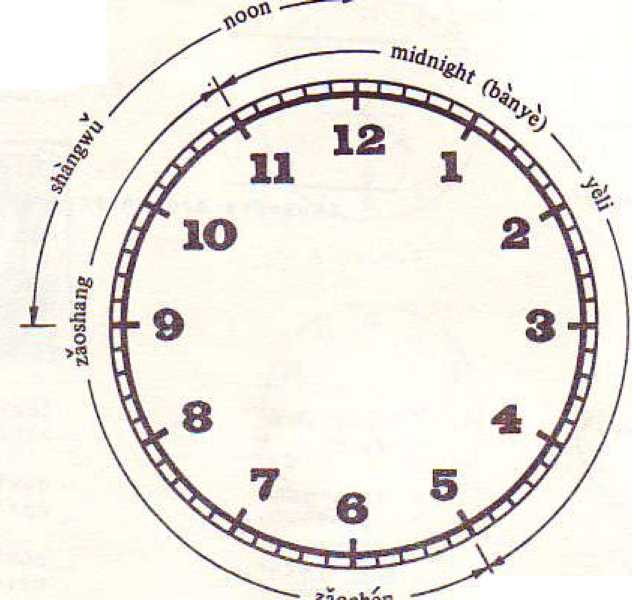 |
(sunup)
THE A.M, CLOCK (from mJdnfght u fit til noon 十he next day)
ŪpFotti noon unti I m I d rH g h t 】

| ||||||||||||||||||
|
(Answers are on page SB•) |
|
Exercise 3 | ||||||||||||||||||||||||||||||||||||||||||||||||||||||||||||||||||||
| ||||||||||||||||||||||||||||||||||||||||||||||||||||||||||||||||||||
|
(Answers are on page 88.) |
DISPLAY IV
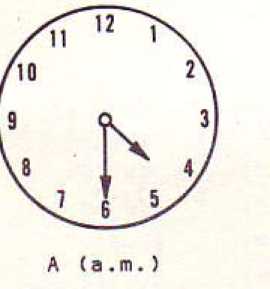 | 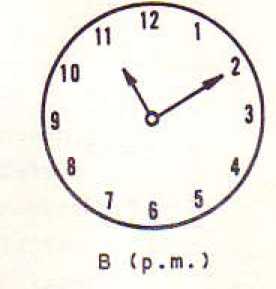 |
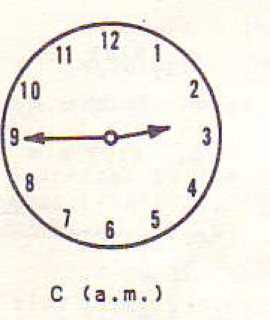 |  |
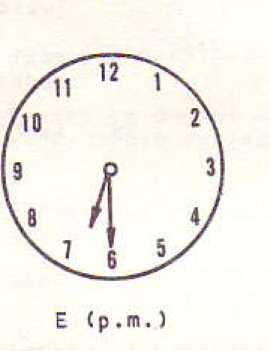 | 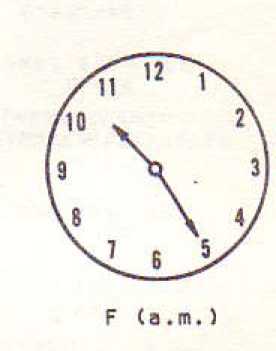 |
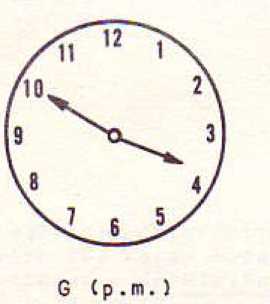 |  |

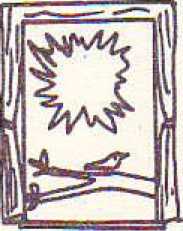
ANSWERS TO TAPE 4 EXERCISES
Exerc丨 se
|
1, |
I :50 |
4,. |
5:15 |
7* |
4 :20 |
|
2, |
8:35 |
5, |
8:05 |
8, |
3: 30 |
|
3. |
6; 00 |
6, |
7:45 |
9. |
11:10 |
Exercise 2
|
1 . |
2:00 p.m. |
4, |
9:45 p.m« |
7* |
a:50 p.m , |
|
2_ 3, |
10:15 a•m-12:30 p |
5. 6, |
5:00 a*m_ 6;25 a.m* |
8* 9. |
11:50 p.m. 11:05 a,m■ |
Exercise 3
|
f. |
las十 year Februa ry |
6. |
this week Tuesday |
|
2. |
+hfs year Apr) 1 |
7* |
next week Wednasdcy |
|
3. |
th! s year July |
8. |
August 6th |
|
4. |
next month 9th |
9. |
January 21s十 |
|
5_ |
1 ©st month 20 th |
10, |
June 8th |
of th© year are th© for K mo nth/9 vue ■ *
number of 十he day ■hao means ^nymber
十he month Is expressed by 十he bound word -hěo, Lt十erally,
Qiyue slhāo ('Uuiy 411)
Bēyuě j ǐuhao CTtAugust 9,f)
Sh I eryue ersh i ©rhěo (irD0C©mb©r 22”)
|
In Chinese、十he names for 十h© months numbers I through 12 followed by 十he word | ||||||||||||||||||||||||
| ||||||||||||||||||||||||
|
The tones on the numbers ytf qtf and b_5 change 十o Rising tones before 十he Falling 十one df yua. |
|
The day of fq丨 I owed by 十he | ||||||||||||||
|
No个 Icb 十tva十 the numbers 3^, and bā do no十 a 丨 ways change tone when part of a larger number* TKl s varies from speaker to speaker.
|
Ths order of the month and ths day of 十he month ts tha same !n ChInese ss It Is t n English; | ||||||
|
To ask what month or what day of 十he month it Is, use the quest 1 on word jf ^ t ,Thow many":
|
ZhěIge yue shf jlyue? |
(MWhat month Is this?") |
|
J Tnt[an j1hao? |
十 Is 十oday!s date? |
J1- f s usually used when the number In the answer Is expected
十o be no more than 10 or so (duōshao being used otherwise)-
But not]ce 十ha十 H- Is used for the day of 十he month, when the answer may corvtatTT a number up to 31 .
|
In I dent IfyIng years, four single-dlglt numbers are foI I owed by 十he word -n I 6n . "year": | ||||||||
|
These numbers are given fn ,ft© 1 ophone s十yleIT Con© by one), not combined I n+o a larger number. YT, qT, and b_5 do no 十 change tone In "telephone style.”
When asking M w h a t year?If 十 he question word n e I n 15 n Is used : NT shi ne1n}an shSngde? ("What year were you born?")
When giving the month# dayf and year In Chinese, proceed from the larger to the smaller:
YTqTqTIi ǚnI an Qīyu© sihio ("July 4 t 1776”)
YtjIǚwǚI Ingn t in SSnyue sSnsh!yThao t”Ma「ch 31, 1950”)
YTJ I u 1 ī ng I f ngn f Sn LI uyue sh f wǔhao C"June 15, I 900IT)
No 十 Tee that the word I f n g, "zero,Tl Is Inserted each . t i me a zero fs used.
The names for days of the week from Monday through Saturday are formed by using th© word for Mweek,u xTng, foI I owed by e number* Not Ice thōt the ChInese week beg Ins on Monday•
|
xTngqT |
("week") |
|
XTngqTyT |
("Monday") |
|
■XTngqTer |
(’-Tuesday") |
|
XTngqTsSn |
("Wednesday”) |
|
XTngqTsl |
("Thu rsday”) |
|
XTngqTwǔ |
("F「lday"5 |
|
XYngqTl1□ |
<!,Saturdayn) |
There are 肀 wo different words for "Sunday ,fl neither con-
十a i n t fig a nu mb© r :
XTngqTt1 In ("Sunday")
XTngqTrl
Literally, XTngqTt 1 Sn Is "heaven day*” and XTngqTrl Is 11 sun day*11
In add I十ion to these common i y used namesj which a r© standard !n the People's Repub丨lc of C h I n a # there are names formed w i +h 11ba I:
|
LHalyT |
t "Monday11) |
|
LTbllar |
t "Ttiesday") |
|
LlbaIsāū |
(ITWednesctaylf J |
|
LTba 1 si |
("Thursday") |
|
Libhiwu |
("Fri day") |
|
Lǐbāl I 1 y |
「■Saturday”! |
|
LlbaltlSn Lǐbālrl |
tfl S u n d a y11) |
|
To ask what day of tha week 丨十 Is,十 he quest! on word Jf-i 5 used: | ||||
|
TIME WORDS WITH DAY, WEEK, MONTH, AND YEAR
The words for 111h I s year^11 "next year,IT and so on and 十he words for "today,” Tl tomorrow p fl and so forth are parallel, wl + h □ ne except I on i
|
JTnn1 an ("thfs year") |
JTn十tSn (^today'1) |
|
mf ngn i ěn ("next year11) |
mfng十1思n (Tl tomorrow") |
|
q y n i S n (ri 1 a s + y a a r M ) |
zu6个t 5n ("yesterday” J |
|
houn1 an (11 year after nexf11J |
hout1En (day after tomorrow1') |
|
q i a n n 1 ě n ("year be for© last"】 |
q i a nt i ān (11 day before yesterday11} |
The words for 111h i s mon十H flnext mori十and so on and the words for lfthls week," "next weekt ir and so forth a re parallel:
|
z h e I a e yue r-this month■” |
zhe1ge xTngqT OR zhě]ge 1T bā 1 (irth 1 s week^ ) |
|
xiage yufe (^next month,r) |
x I age xTngqT OR x1 age iTba! ("next week” |
|
shangge yue ("last month” |
shanggs xtngqT OR sh&ngge 1Tbi t tn I as t we©kn) |
D 1 HteraMy mean I ng Tldot # M Is the counter for hours on the c 1 ock. The word zhōwq, "o’clock" U f tera I I y “clock”, I s added op+1onaIIy«
|
Yldlěn (zhōng) |
Cl:00) |
QTd1Sn (zhōng) |
(7:00) |
|
LI ingd!an (zh5ng) |
<2:00) |
83dtan (zh5ng) |
(8:00) |
|
S5nd15n (zhōng} |
<3:00) |
J1ǚd1Sn Czhffng) |
(9:00> |
|
Sid I Sn (zhSng〉 |
(4:00) |
ShfdIān (2hōng) |
(10:00) |
|
W&dlSn (zh5ng) |
(5:00) |
ShIyTdIan 【zhōng) |
(1 1 :00) |
|
L t ud1Sn (2h5ng) |
(6:00) |
ShterdIān (2hōng) |
C12:00) |
To express + Im© on the ha I f hour, the word ban, "half,11 !s used:
|
L 1 ingd[an bin Czhōng) |
(2:30) |
|
Wud f Sn bhn (zh5ng) |
(5:30) |
|
j f ud t Sn ban (zhōng) |
{9:30) |
|
ShfvTd15n bin (zhōng) |
(11:30) |
Not tee 十 ha 十 these express i ons can a I so end In zhCng y c 1 ock.11
To express 十丨me on +h© quarter hour,肀he word ke, ^quarter,11 I s used;
|
YldI an y f ke |
(1:15, ”a quarter after 111) |
|
L1 ingd1ān sSnke |
(2:45, ,Tthree quarters past 2”) |
|
WūdlSn yfke |
(5 : 1 5 # ira quarter past 5”) |
|
Shlerd[an sānkě |
(12:45, Mthree quarters past 1 211) |
A more specific way to express 个he idea of ”quarter pas十 the hou rif I s with the word quo, pass"r
|
sid i an guo y T ke |
("a qysr+er past 戽M) |
|
sh f ě rd lin guo y f ke |
(,,a quarter pas十 12”) |
|
To express the Idea of "quarter to the hour/1 the word chb, fl+o I ack,lf may be u sad : 一 | ||||
|
Wi 卞 ti expressions of quarter hours before the hour p word
orders are possible, (Only one Is possible with expressions of t f me after the hour,,》
Express 丨ons of quarter hours before the hour or past th® hour do not end I n 2hdn^t "o1 c I ock*fl
|
The word fēn, ,fml nu te,11 Is used to give the exact time: | ||||||||
|
|
Fēn may b© omitted fn longer 11 me expressions: | ||||
|
|
Th© word I ī ngf ITz©rof IT may be added to clarify a time express ion: | ||||
|
Gu& and ch^ may ba usad wJth 11 me express Ions IncI yd Ing minutes;
|
sffndISn guo ersh1f5n |
£fl20 minutes after 3") |
|
qTd1 an chi shff吞n chh shIfffn qTdJān |
(fl 10 minutes before 7fl) |
|
To ask what 11 me of day If 1 s p use th© question word Jj_ : | ||
|
|
[n Chinese, th© different parts of a day are referred to as follows: HOURS (approx.) | ||
|
zaoshang (zSochěn) |
(,Tmorn 1 ngM--f u I 1 daylight un十11 near noon) |
6-11 a.m. |
|
shSngwu (shangwu) |
(ftforenoonff--norma 1 wo广k 丨 r»g hours un十II noon > |
8 or 9 a.m. unt11 II a.m» or 1 p.m. |
|
ihōngwu (zhSngwu) |
{MnoonTI) |
II a.m. until I p.m. |
|
x l &WǓ (xliwu) |
(,faf ter noonfl--noon un+tl fh© end of 十he bus 1 ness day) |
1-5 p.m. |
|
wSnshang |
("even 1 ng,f-_af十er 十he evening mea 1 > |
6-M p.m, |
|
biny^ |
(”mldnlght"> | |
|
yb 1 1 |
(,rn I ghtf,--genera 1 1 y from around II p.m. until sunrise) |
II p.m. untIt 4 a.m* |
|
In Chinese, clock time Is often precedod by a word desIg-nsting the part of the day Involved: | ||||
| ||||
|
Not Ice that the ChInese word order once agafn begins with the larger unit and proceeds to the smaller. |
T here are no appropriate examples i n t ho Or isntatīon Module. You will find these words \ n la十er modules.
Thls īs 十he name of a forrnsr province*
A somewha 十 similar neLrtra I i za 十 i on happens to vowels I n English* Vowels which are perfect Iy distinguishable when s十ressed become i nd J st I ngu 1 shab I e when unstressed. "[ confined the d o gFT may sound the same as Tl I can find 十 he dog/1 although, with stress,
11 con-tl does no十 sound 十he same as "can,"
Adapted from btemMlflrV £tnn«g-Chiiu
Tha consonant /n/ at the end of a syI table may sound a I 1tt!a ]j ke /ng/ when the next syI t ab1e starts with an /h/ or a voweI sound, as In her hǎot ''very good/' and Yān 1 Sn, "Venan .,T Actua I 1 y however, +h1s variant of /n/, pronounced T + h th© tongue not touch!ng the roof of the mouih t Is quT+s dTsttnguīshabIe f rom /ng/, pronounced with the back of the tongue touching, Mo十ice f n tha romanīzatTon Yān1Sn that an apostrophe shows which syllable the n_ belongs to,
Abbrevfa 十 Ion of / uo/ after lablats b_( £_, and f_.
**/U/, /Uan/, /Ue/, and /Un/ are spelled U£n, ue.# and un_ .respiac 十 f veī y after 丄,q_t x, and
The Summary a十 the end of this module restates the rutes presented on TftD Tape I»
s written only where ft Is necessary f n PTn y tn: dft©r e and to distinguish rtu f rom nU and lu f rom [ īJ,
^ I ■丨• -jj »■